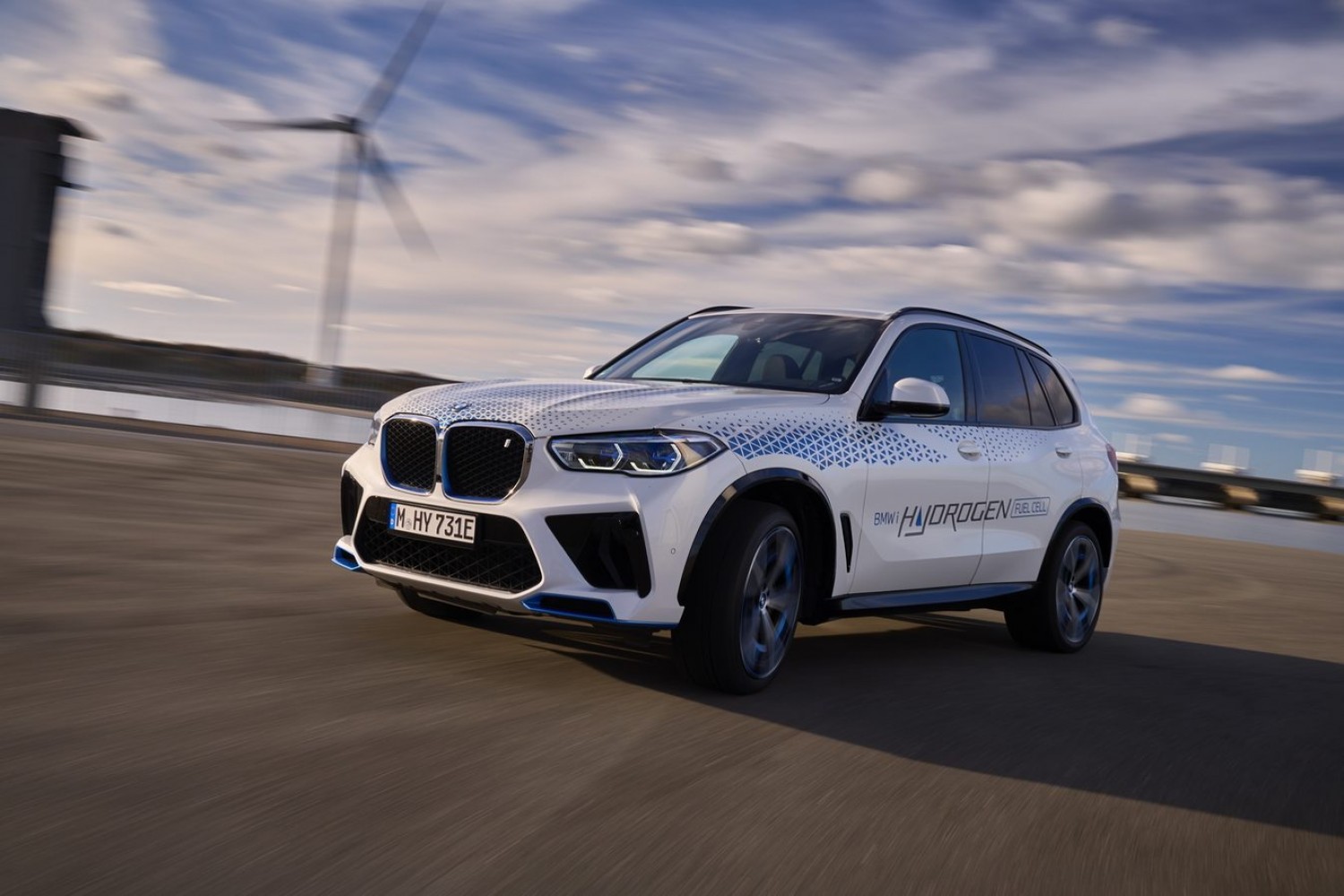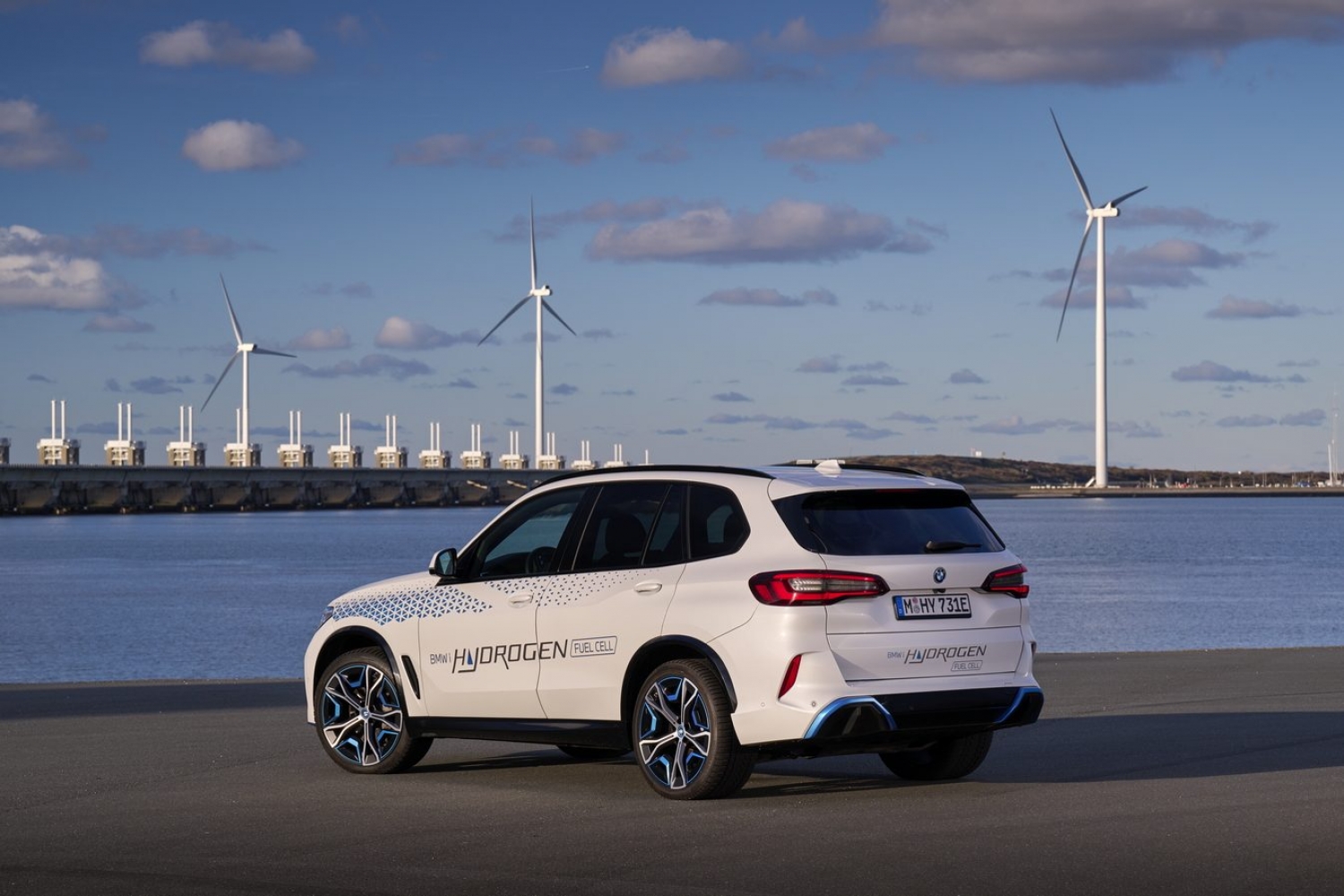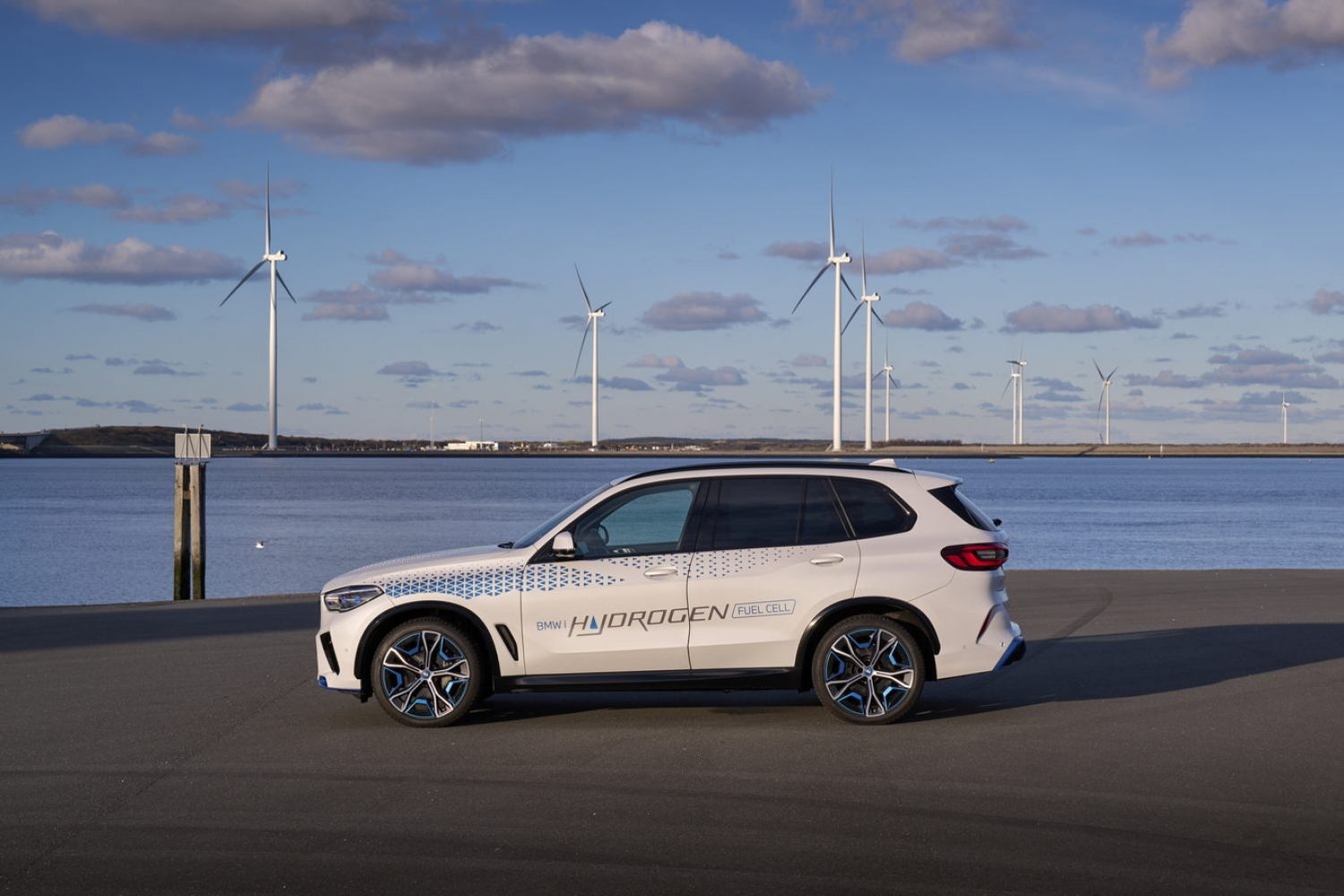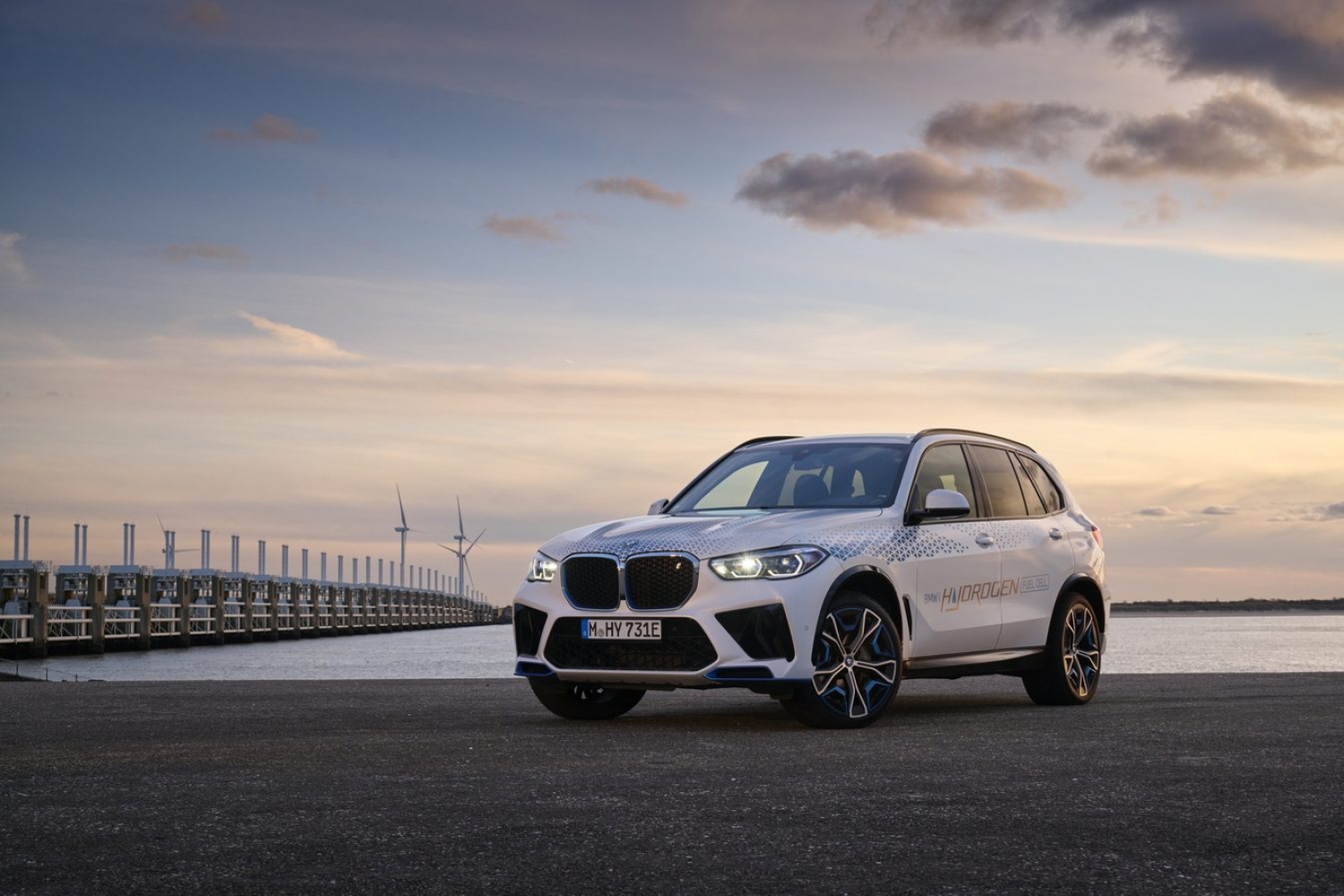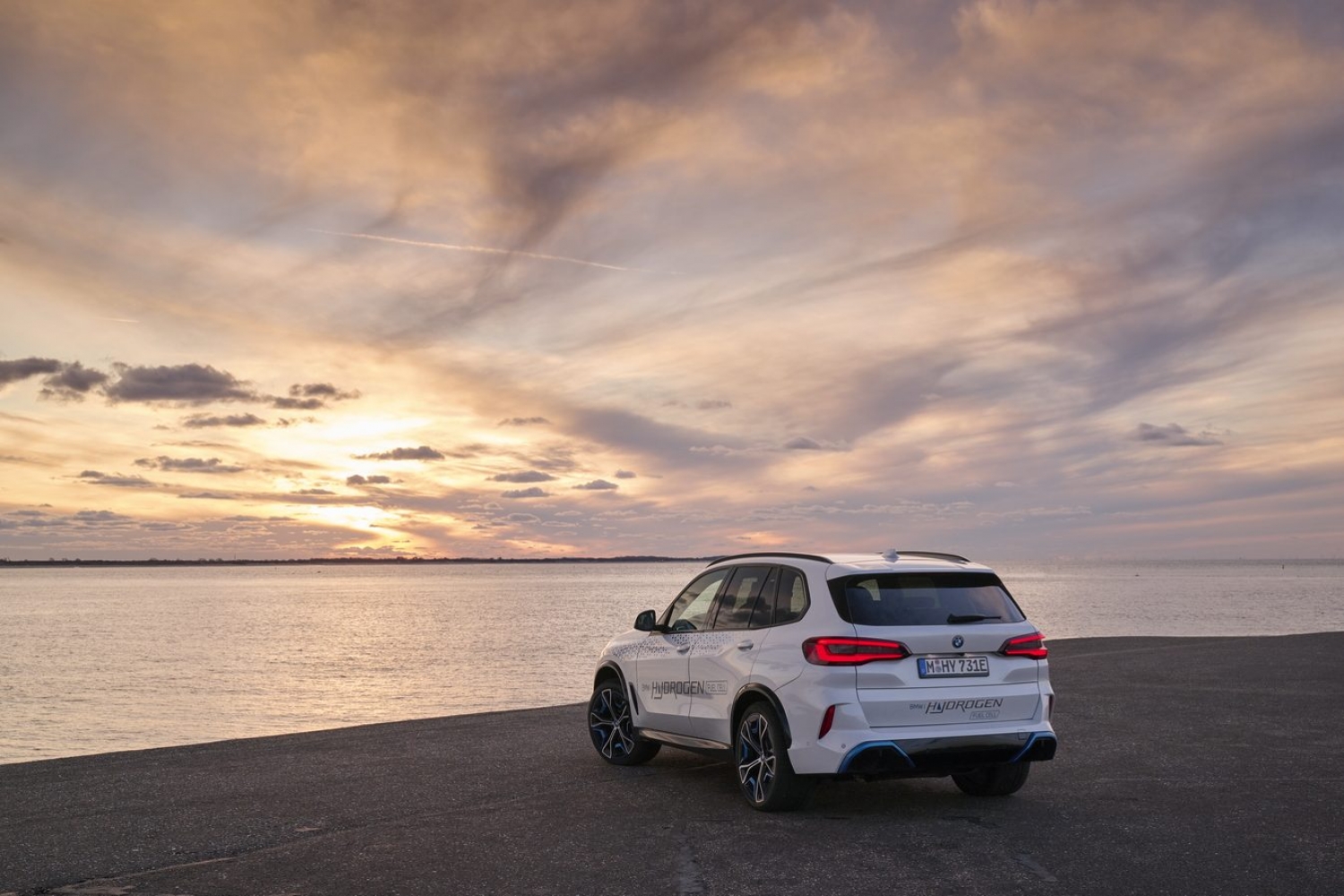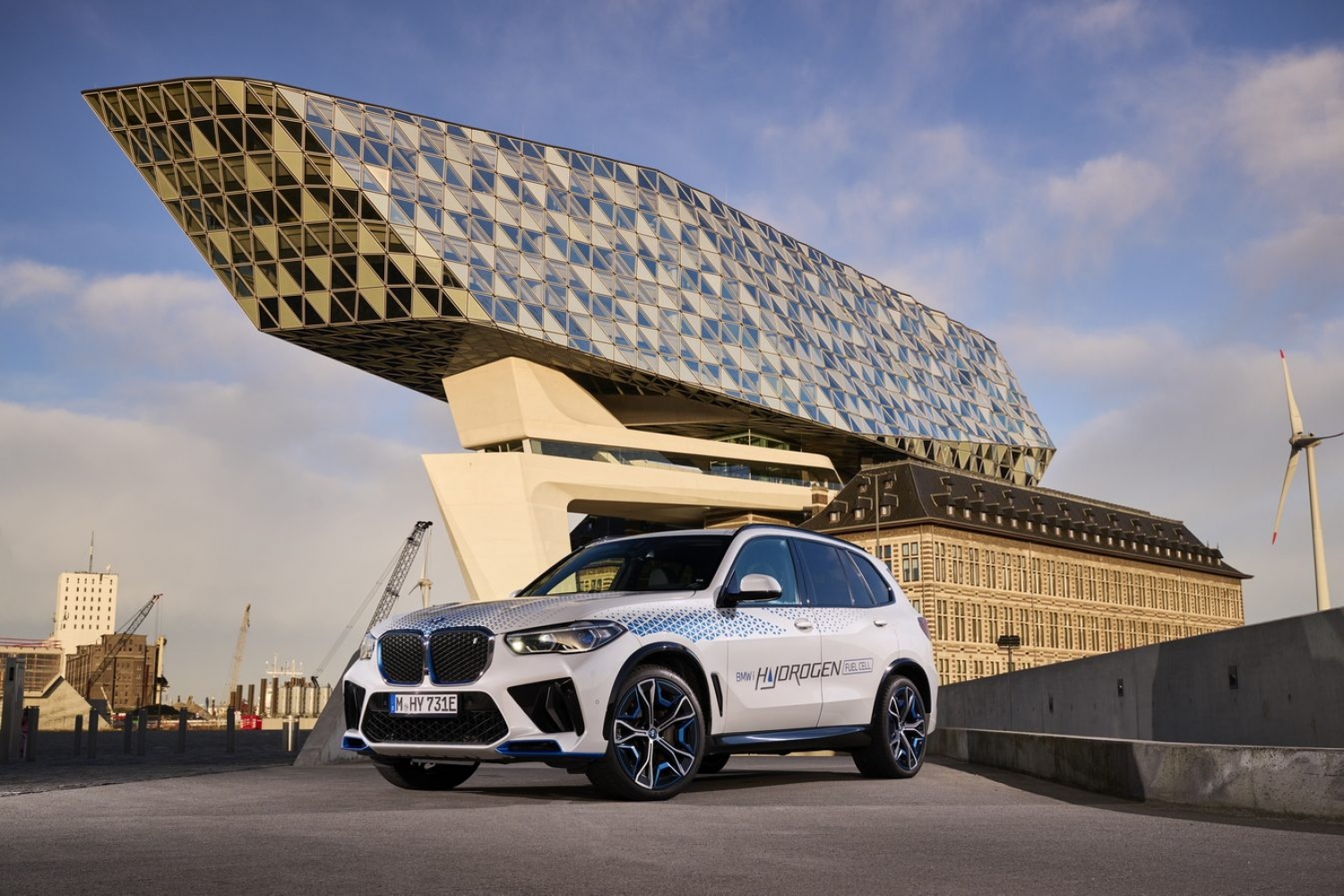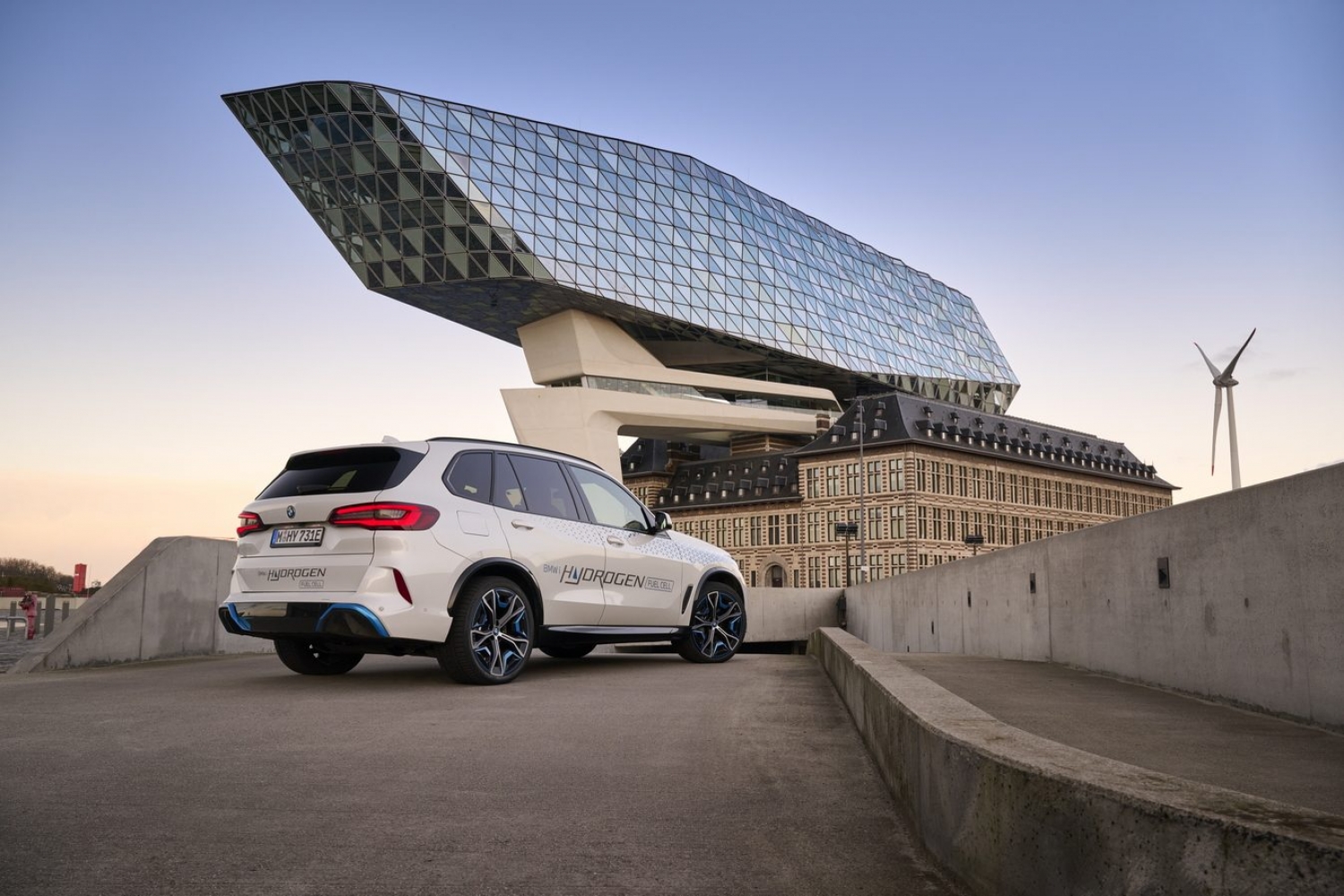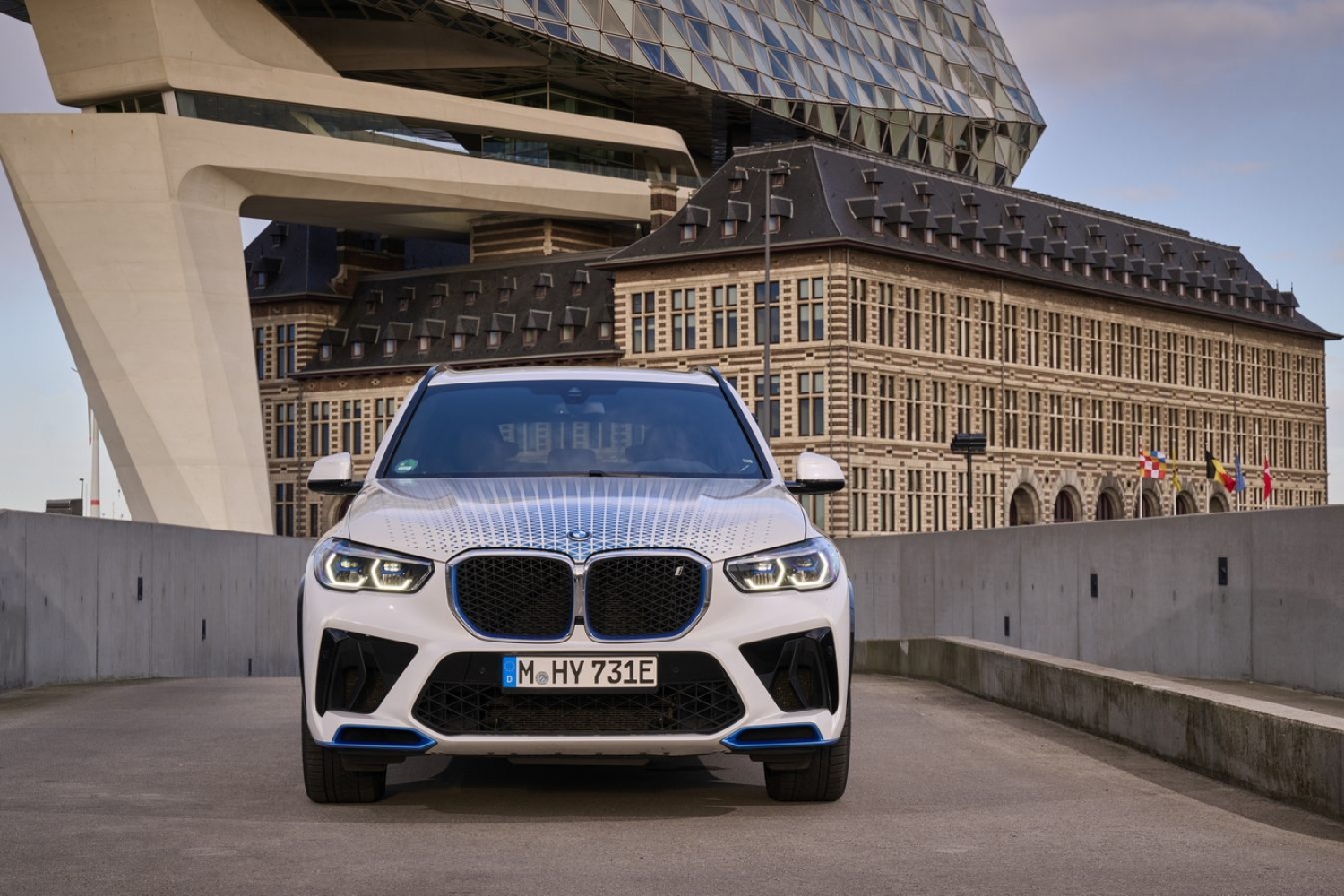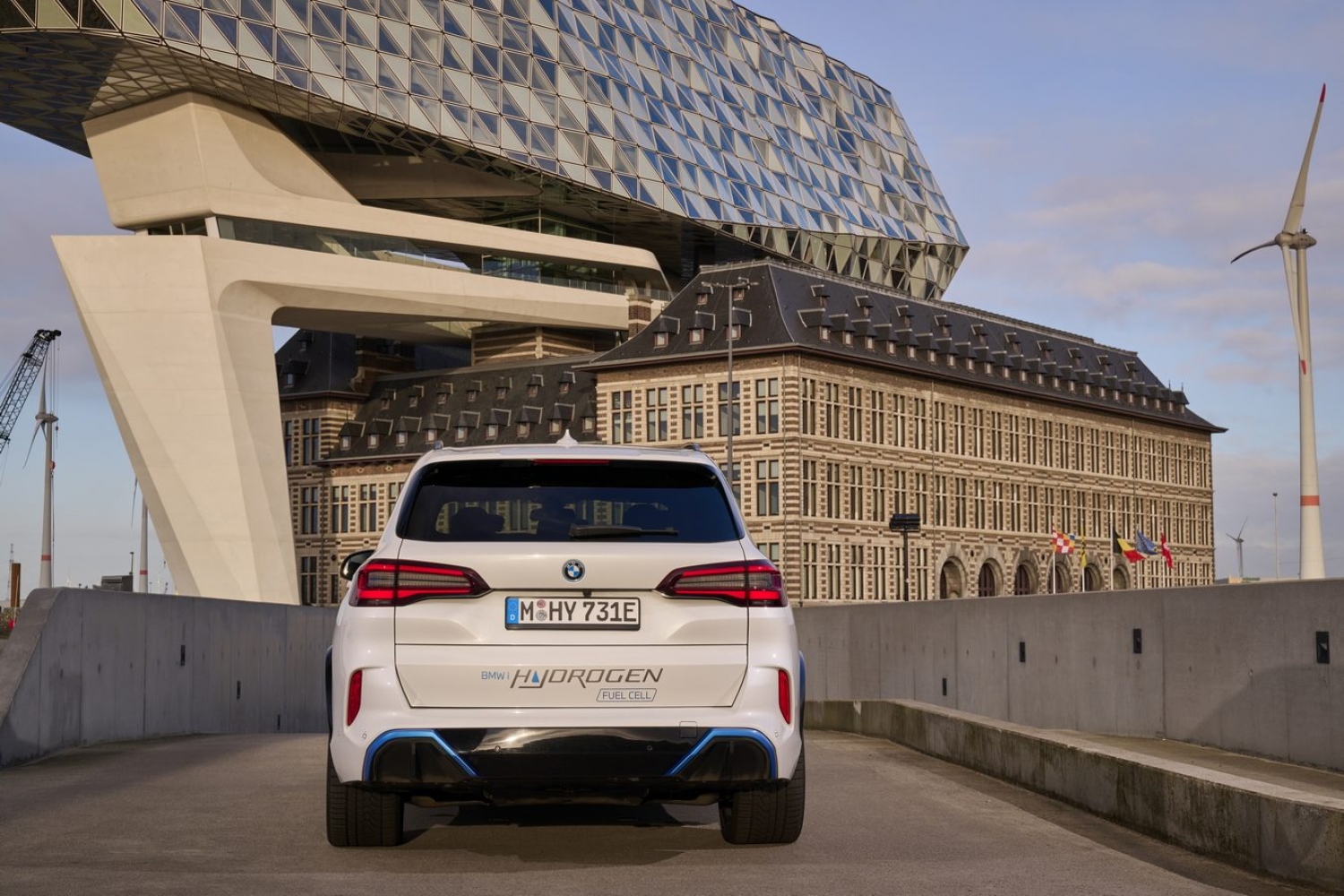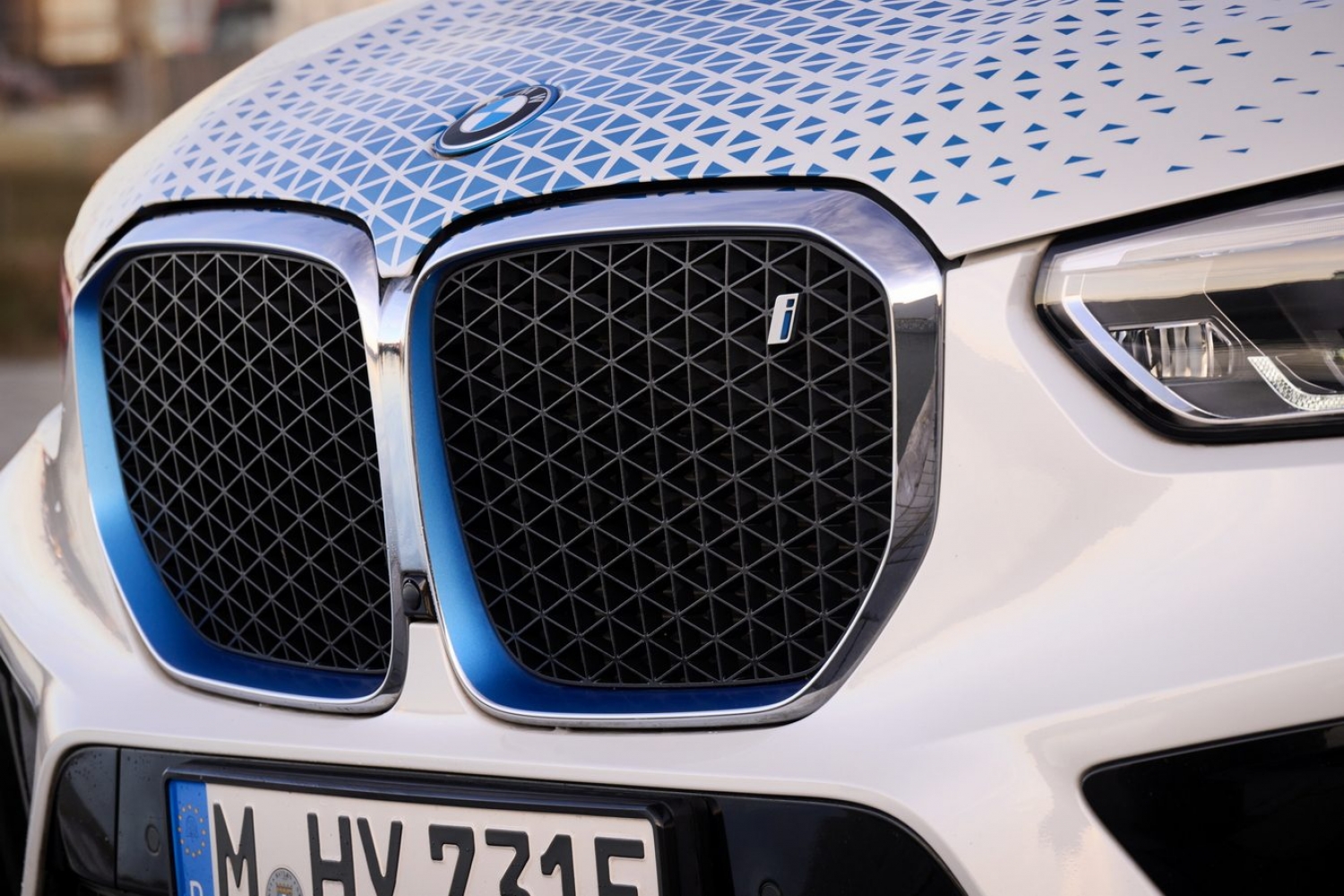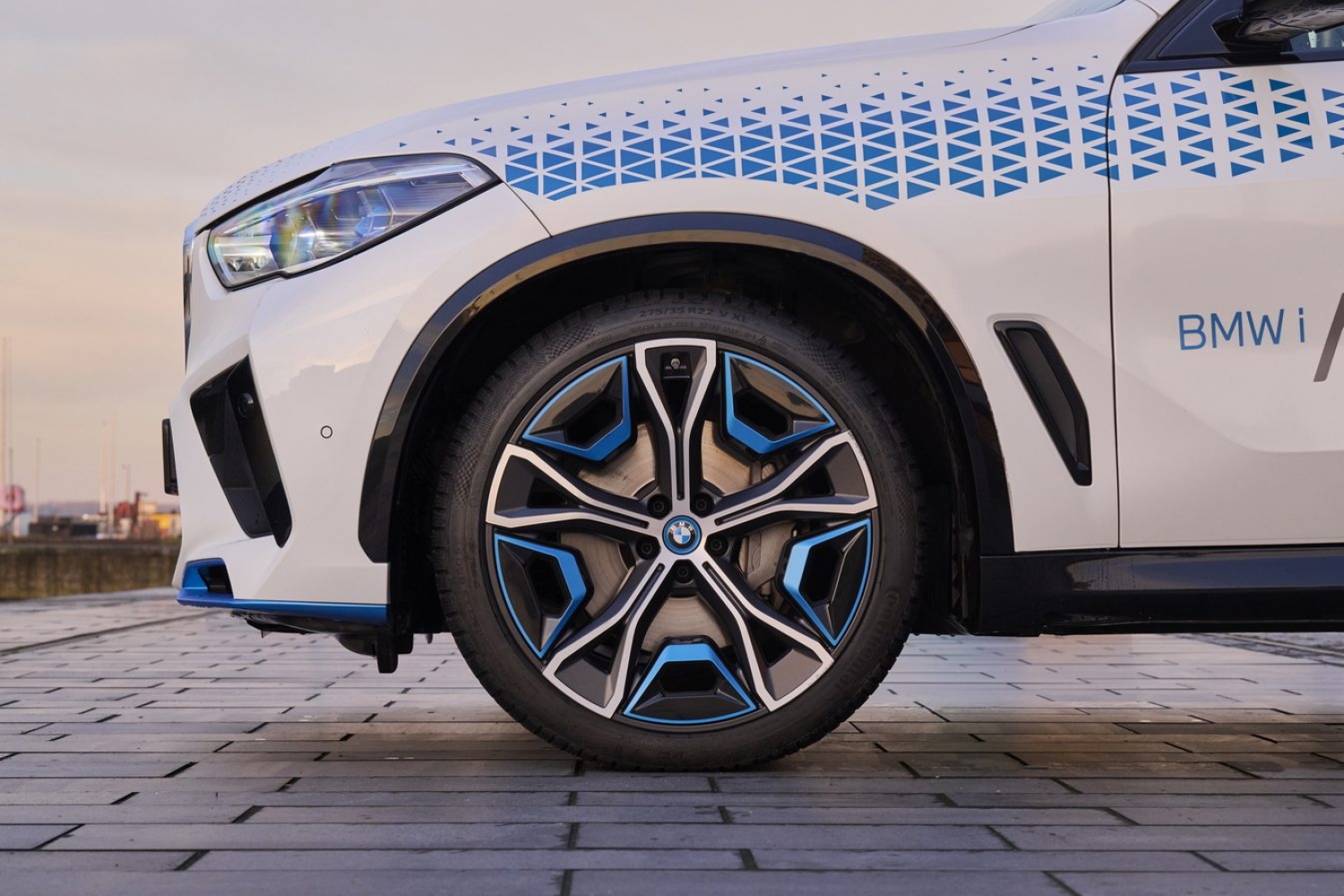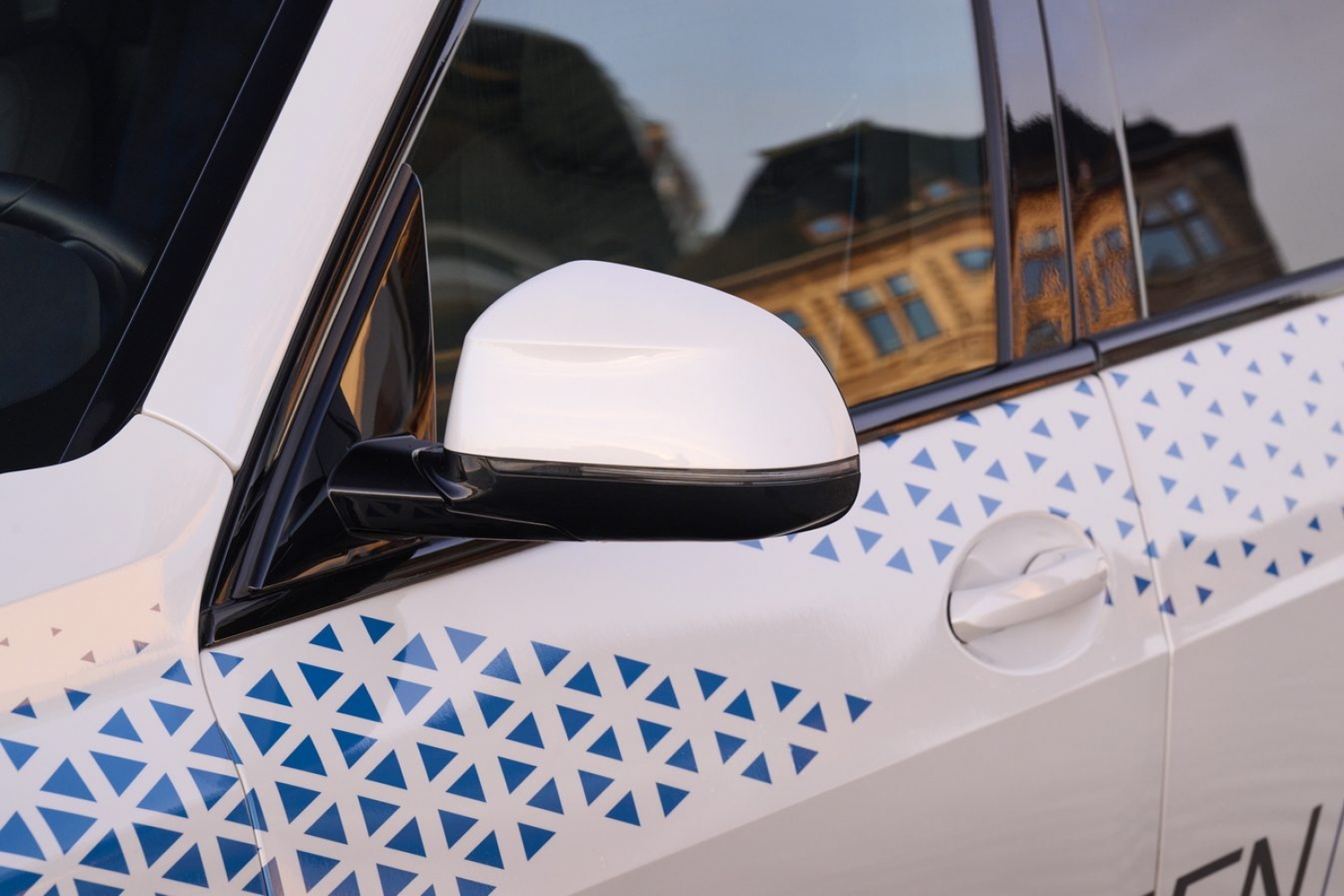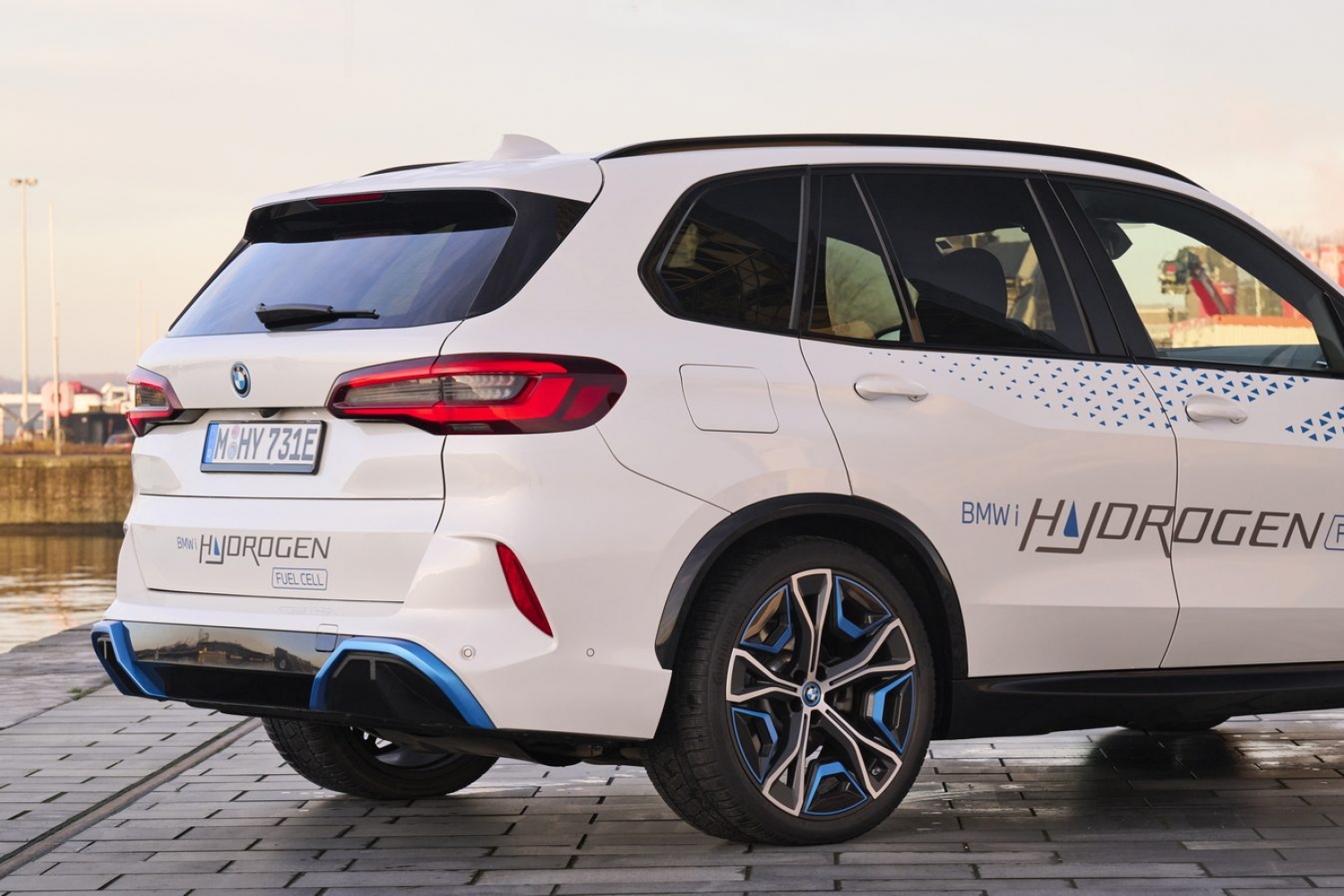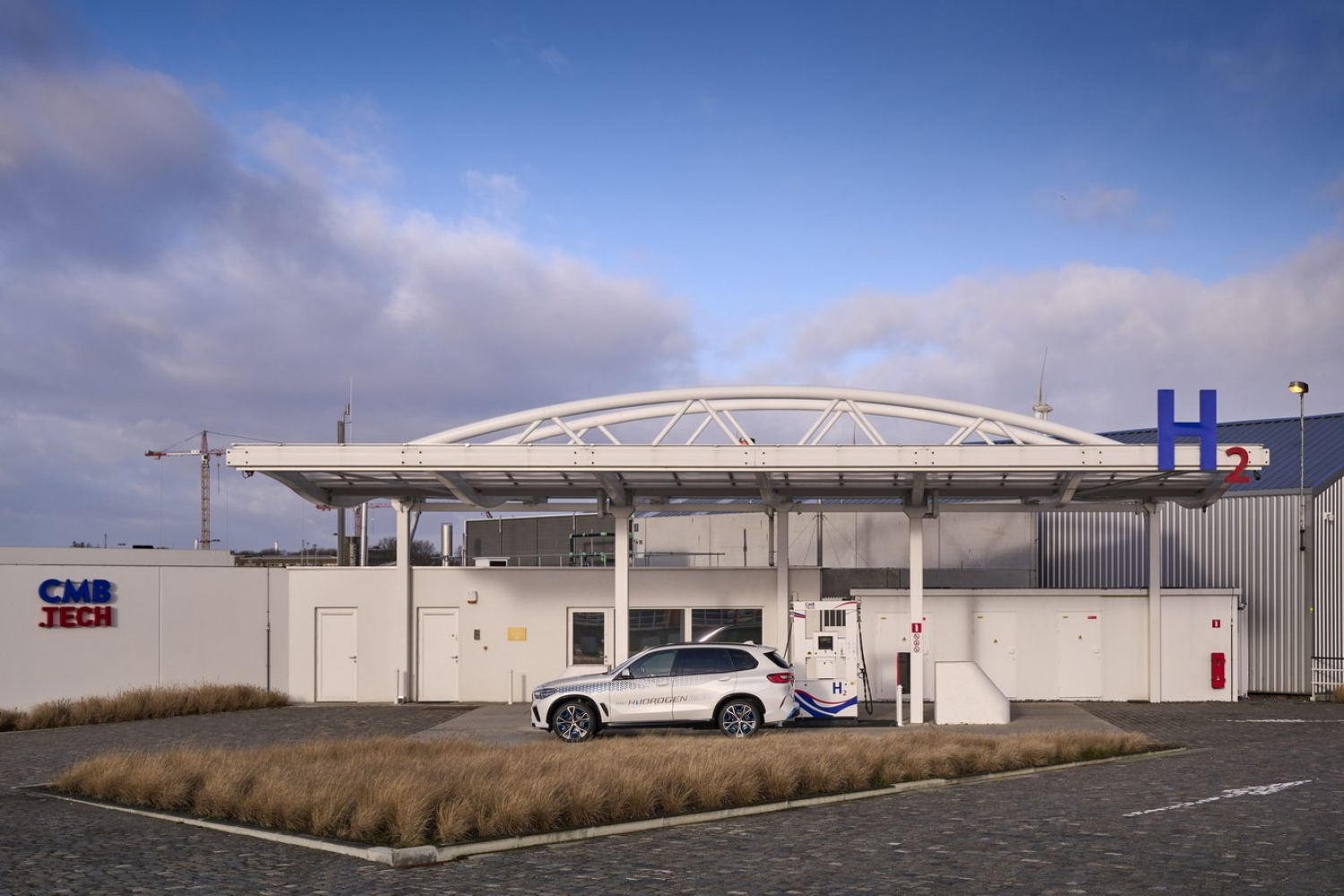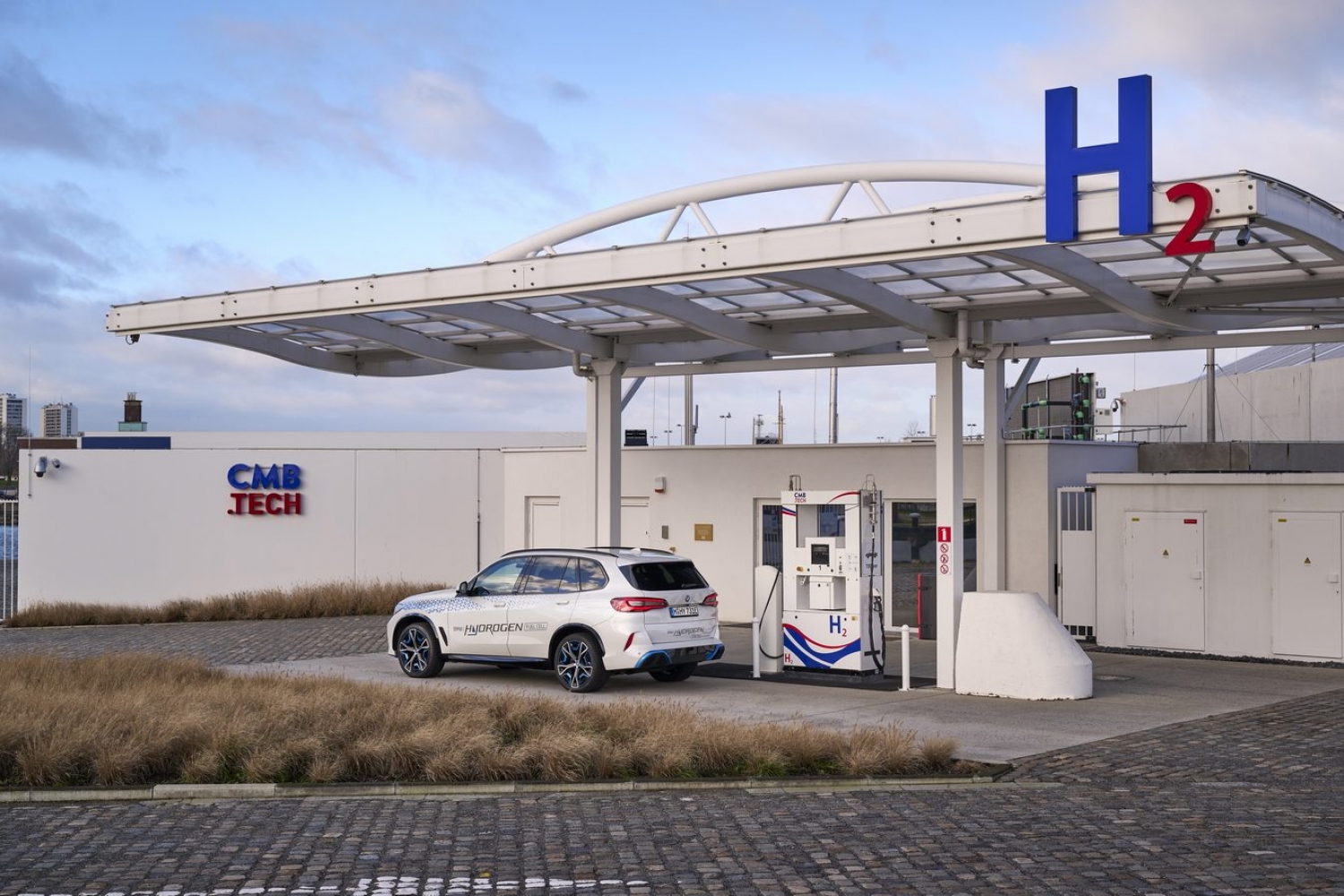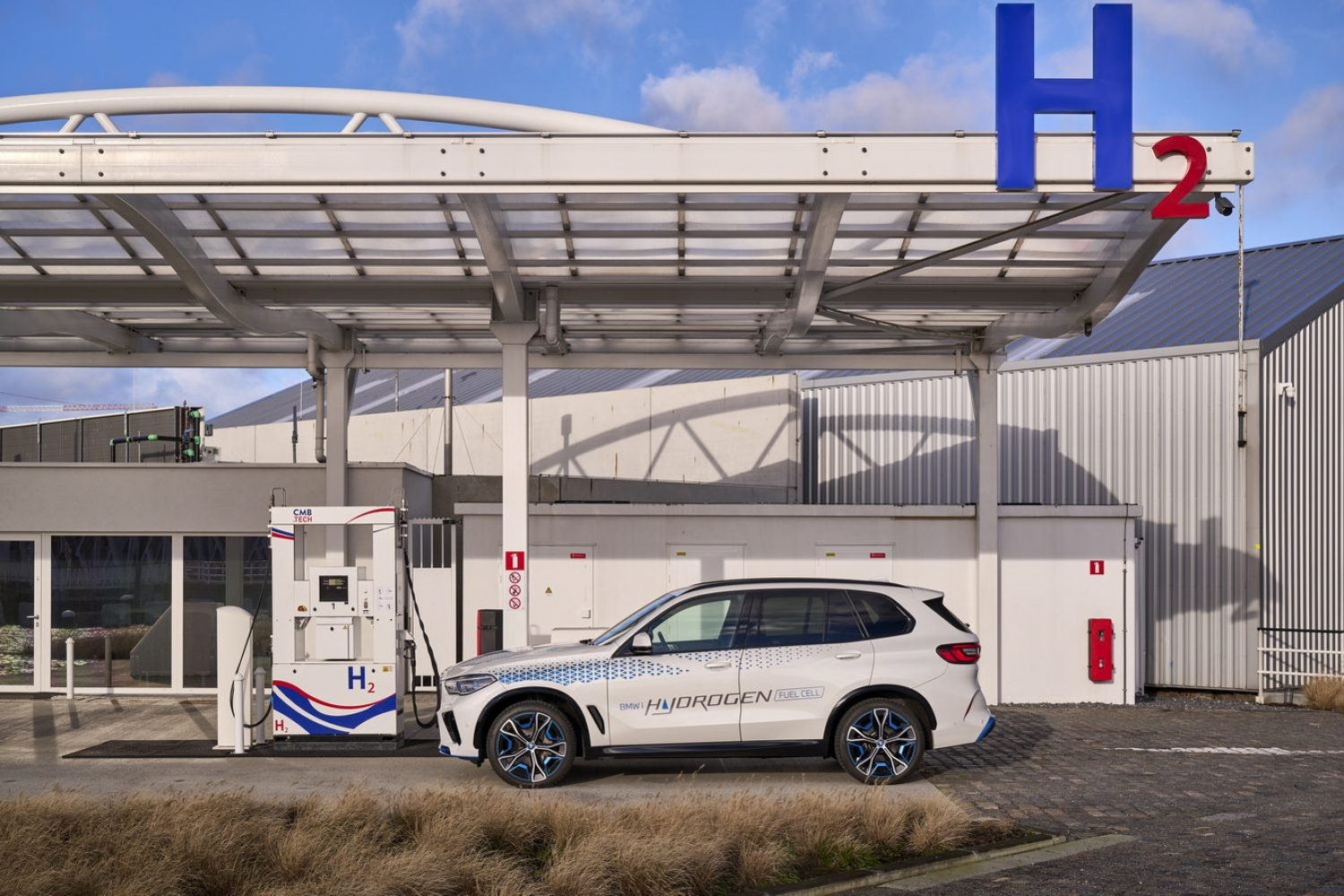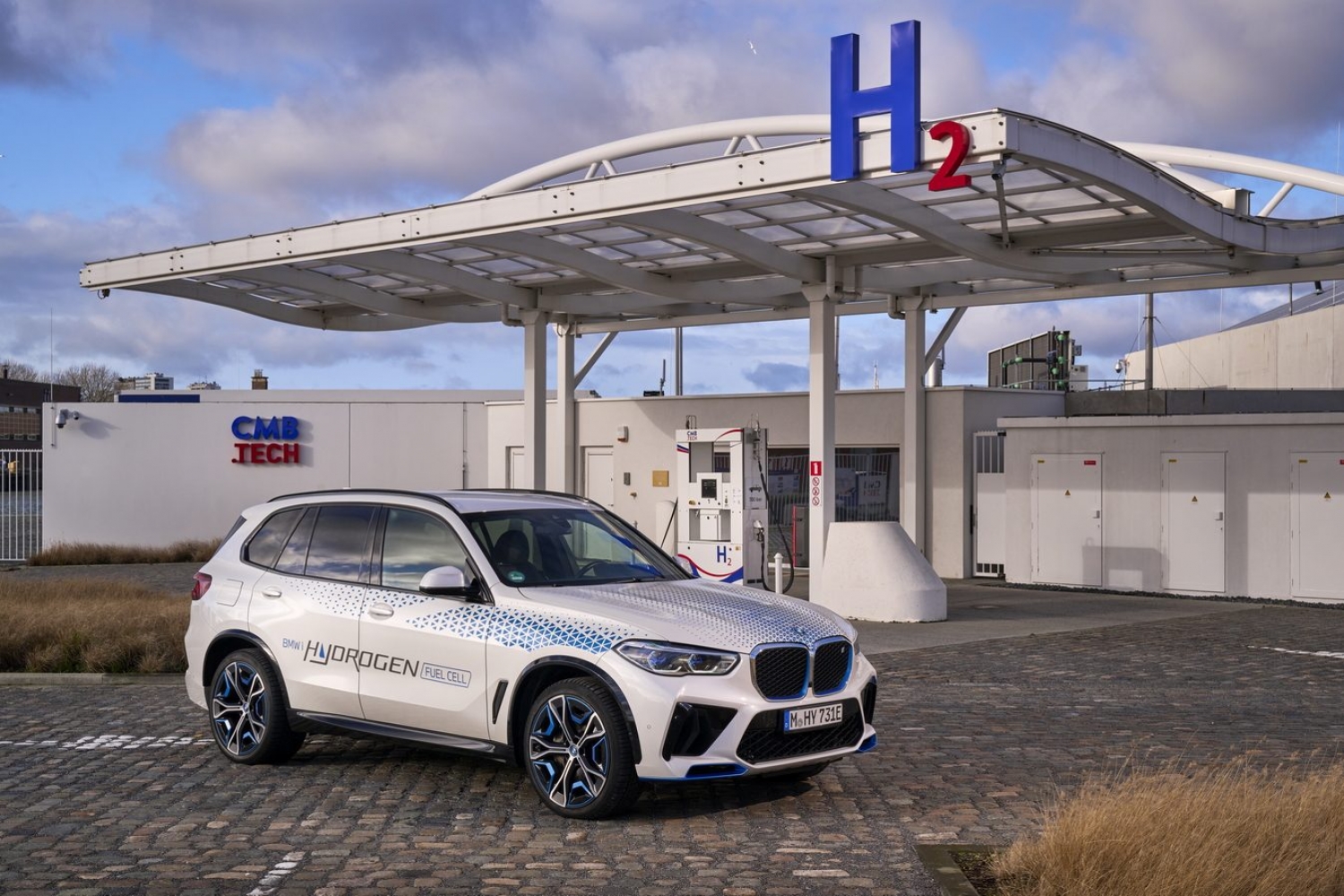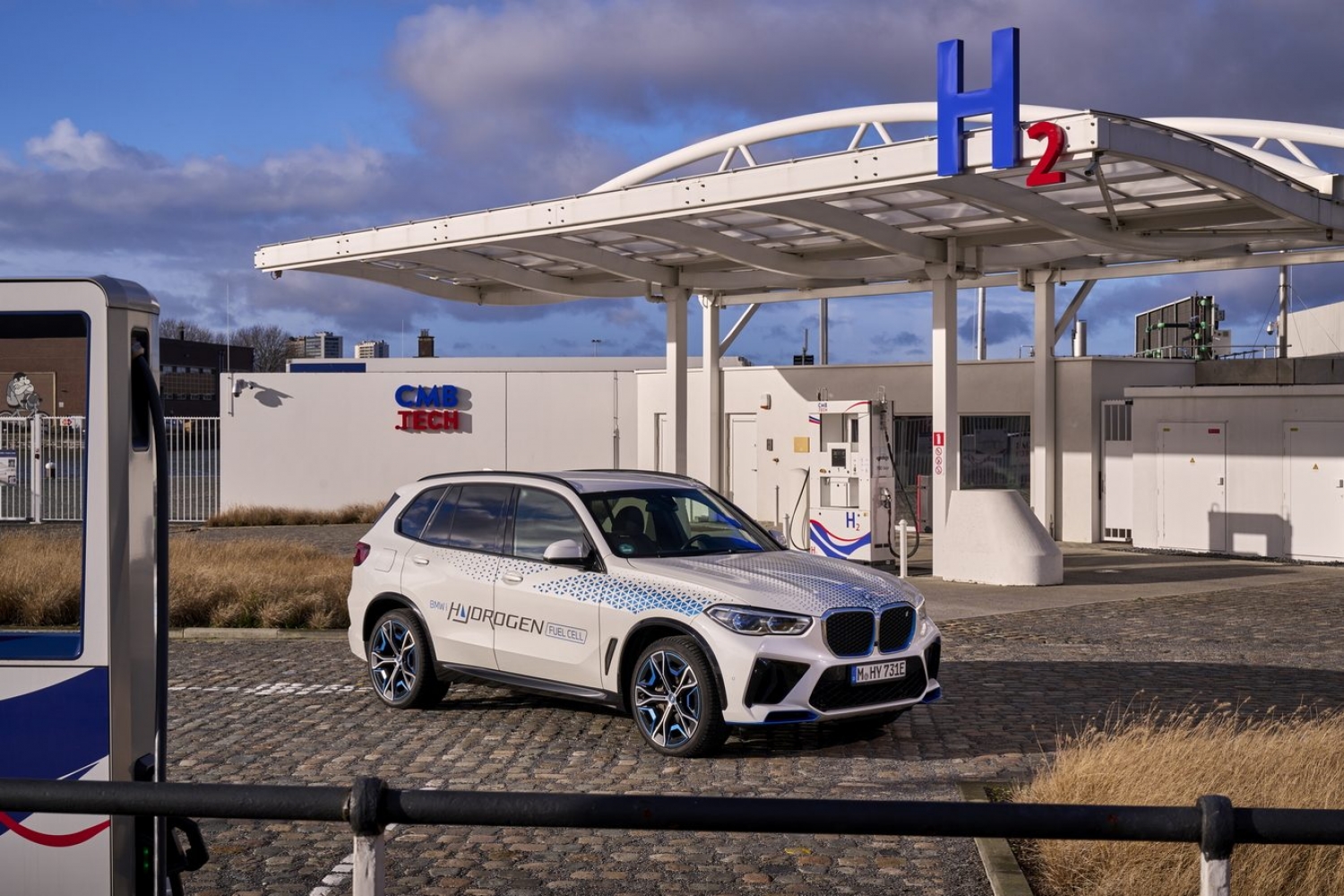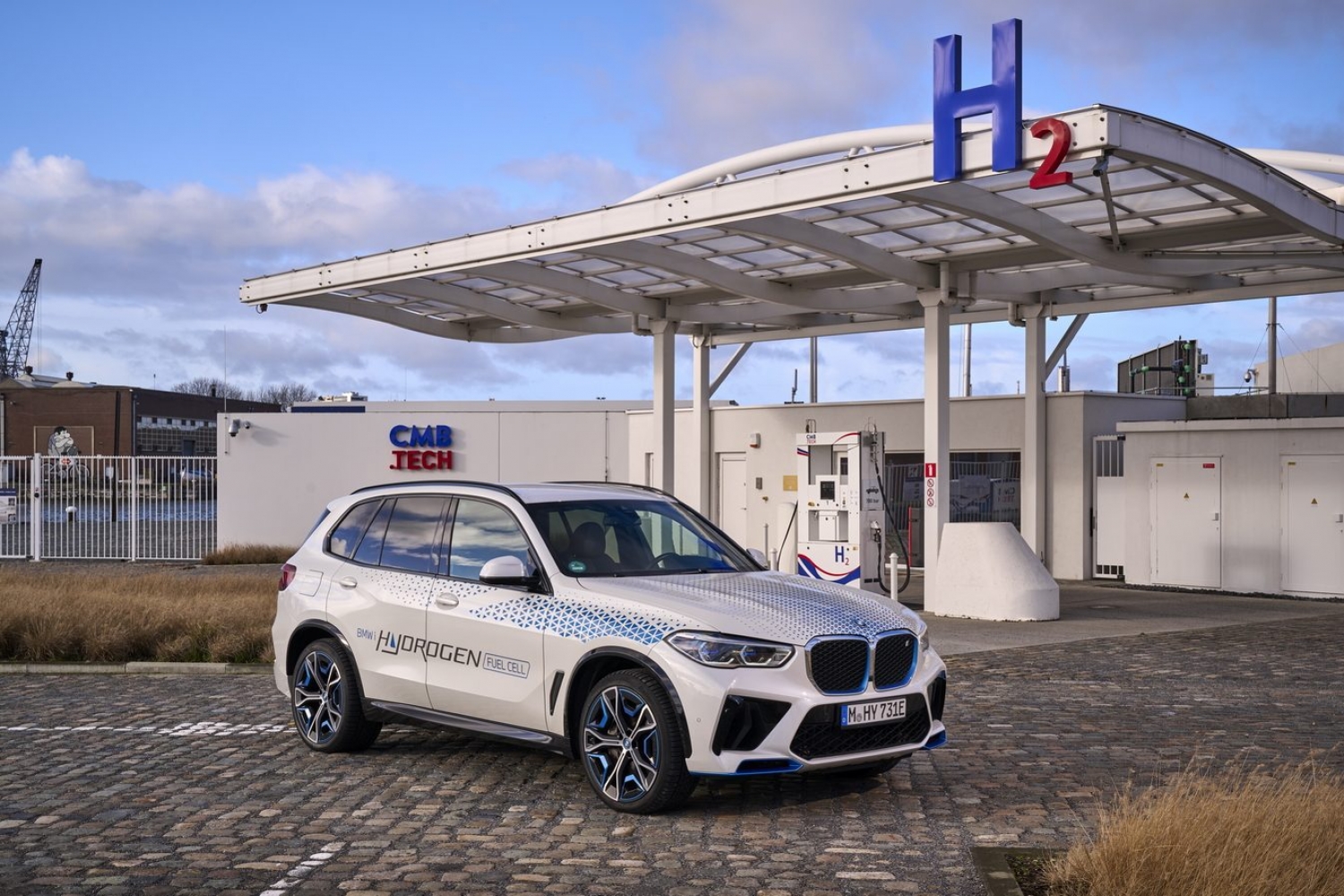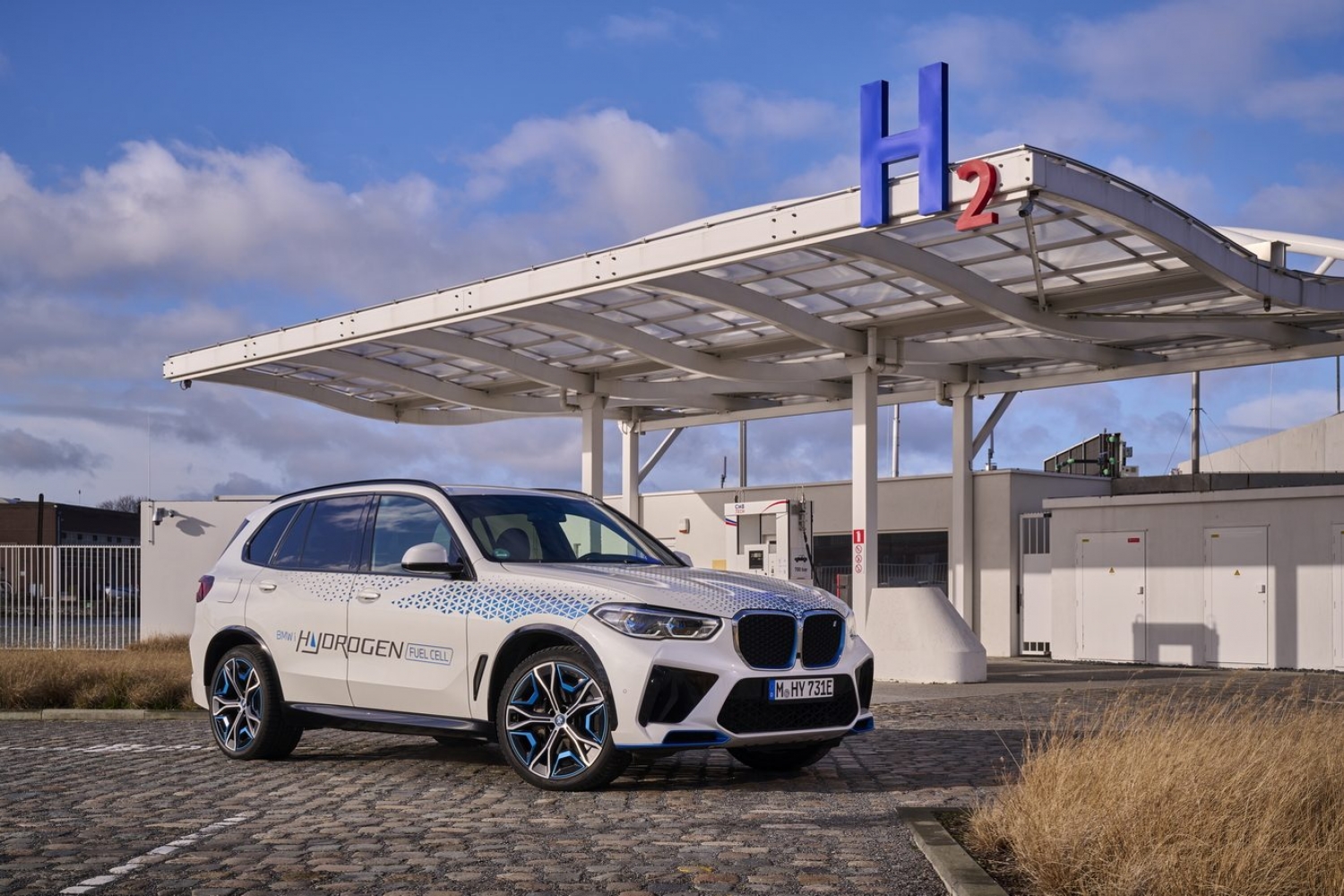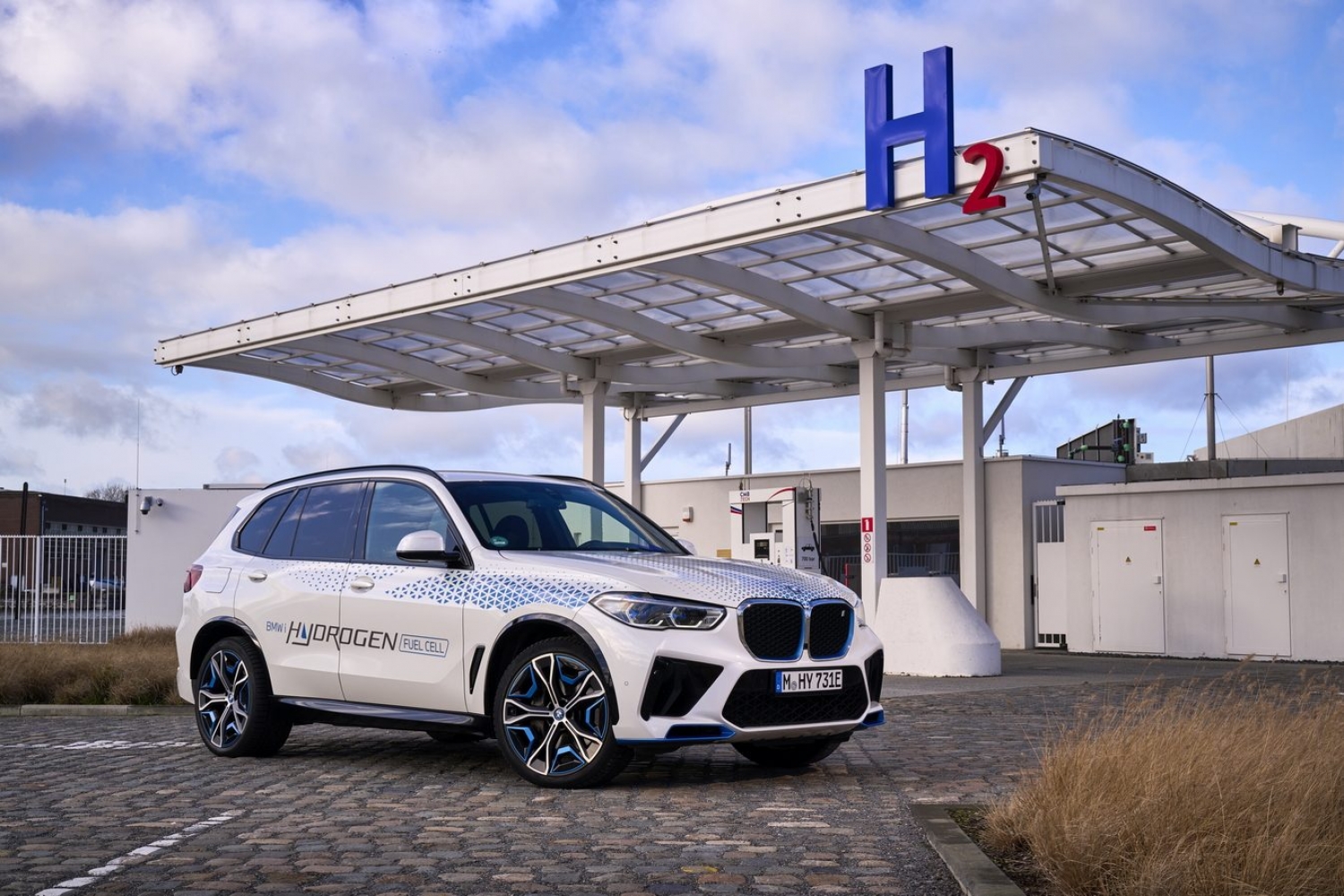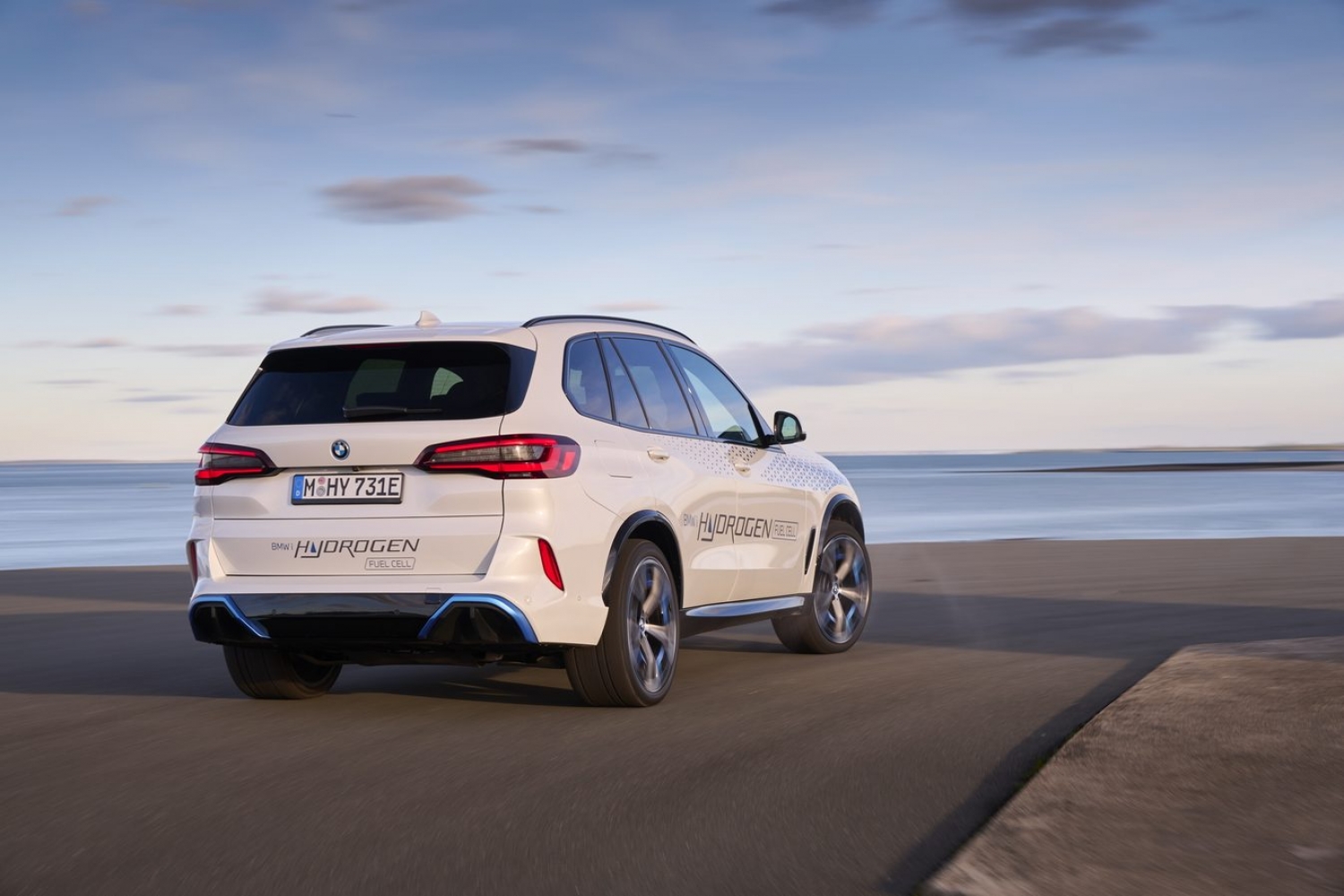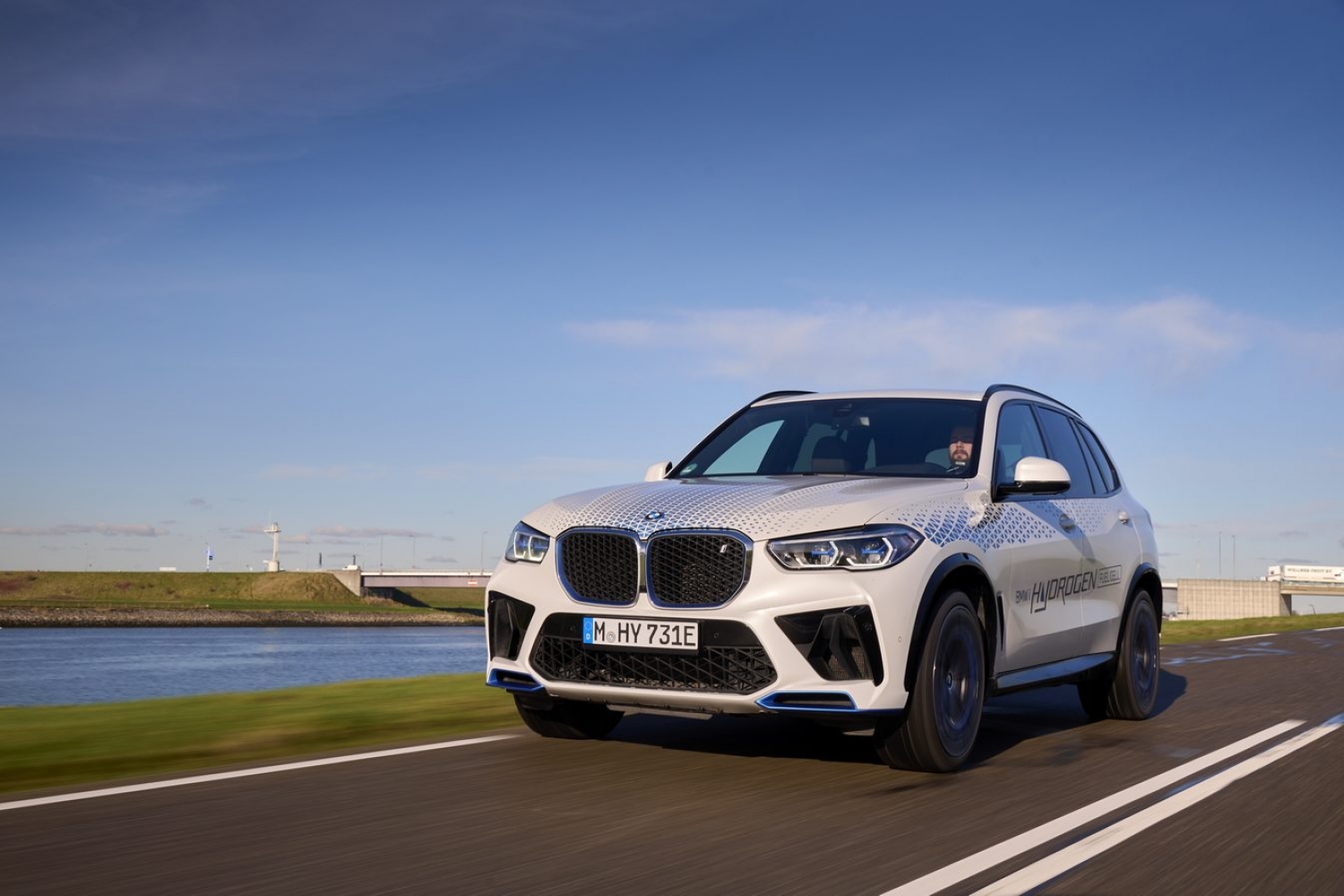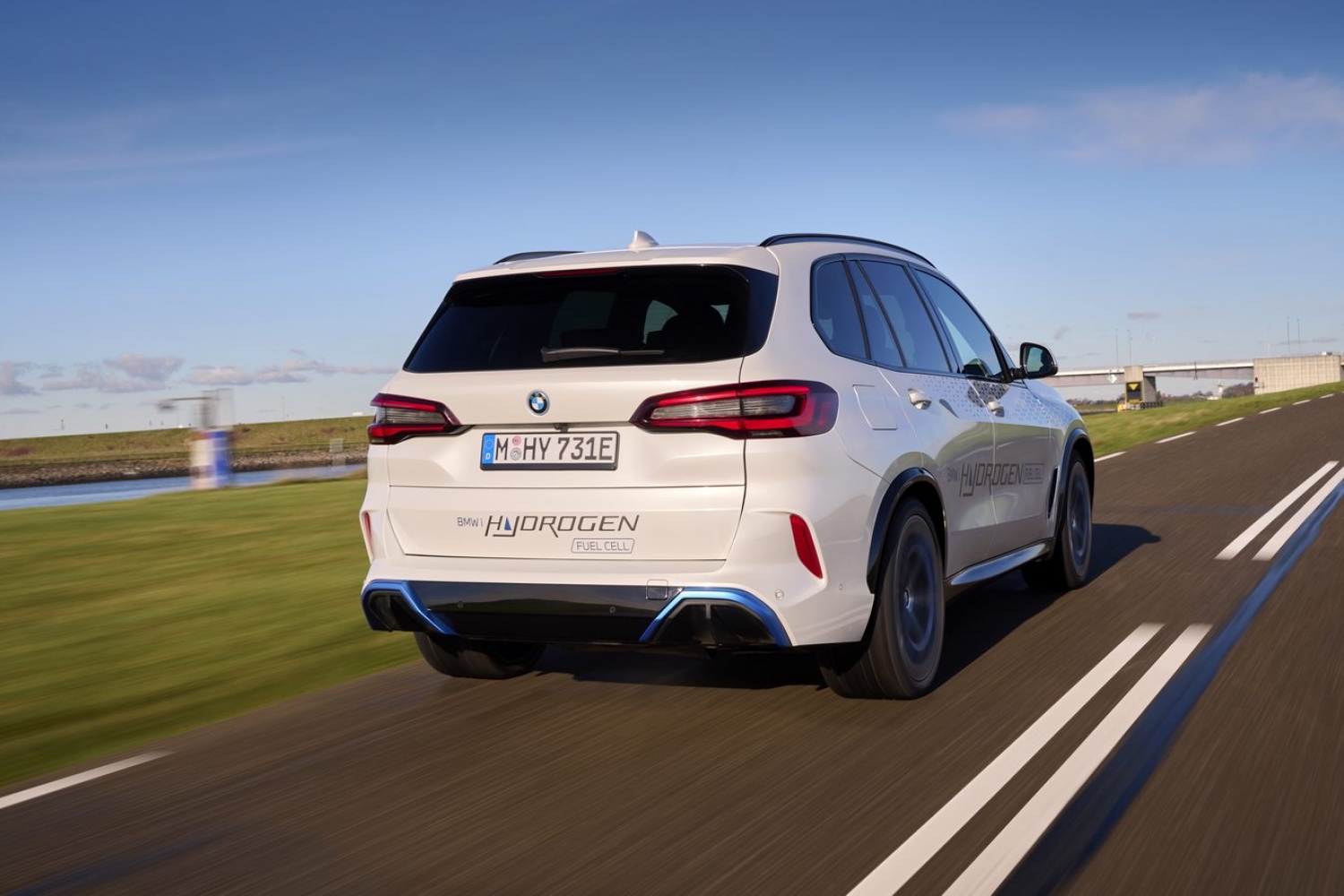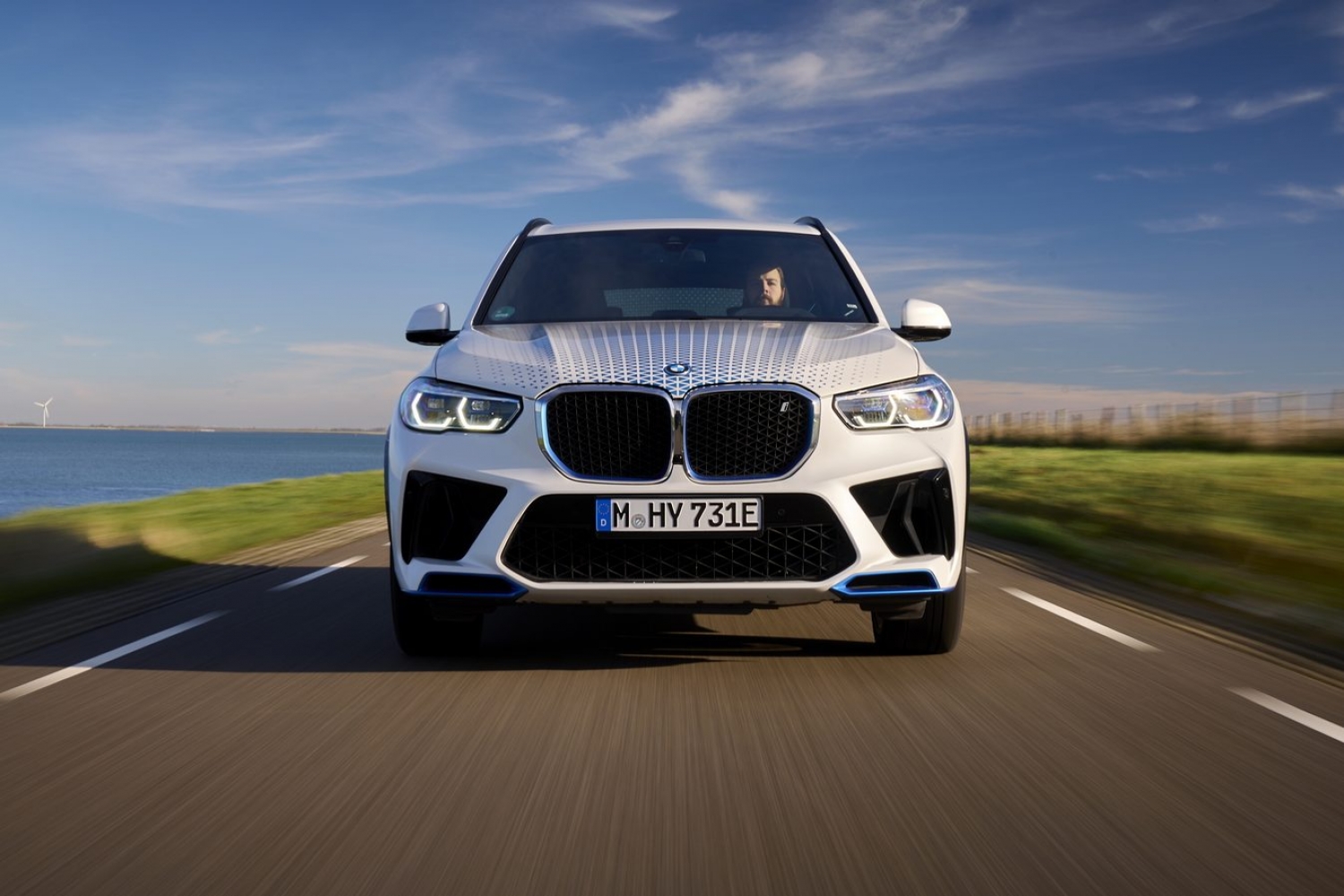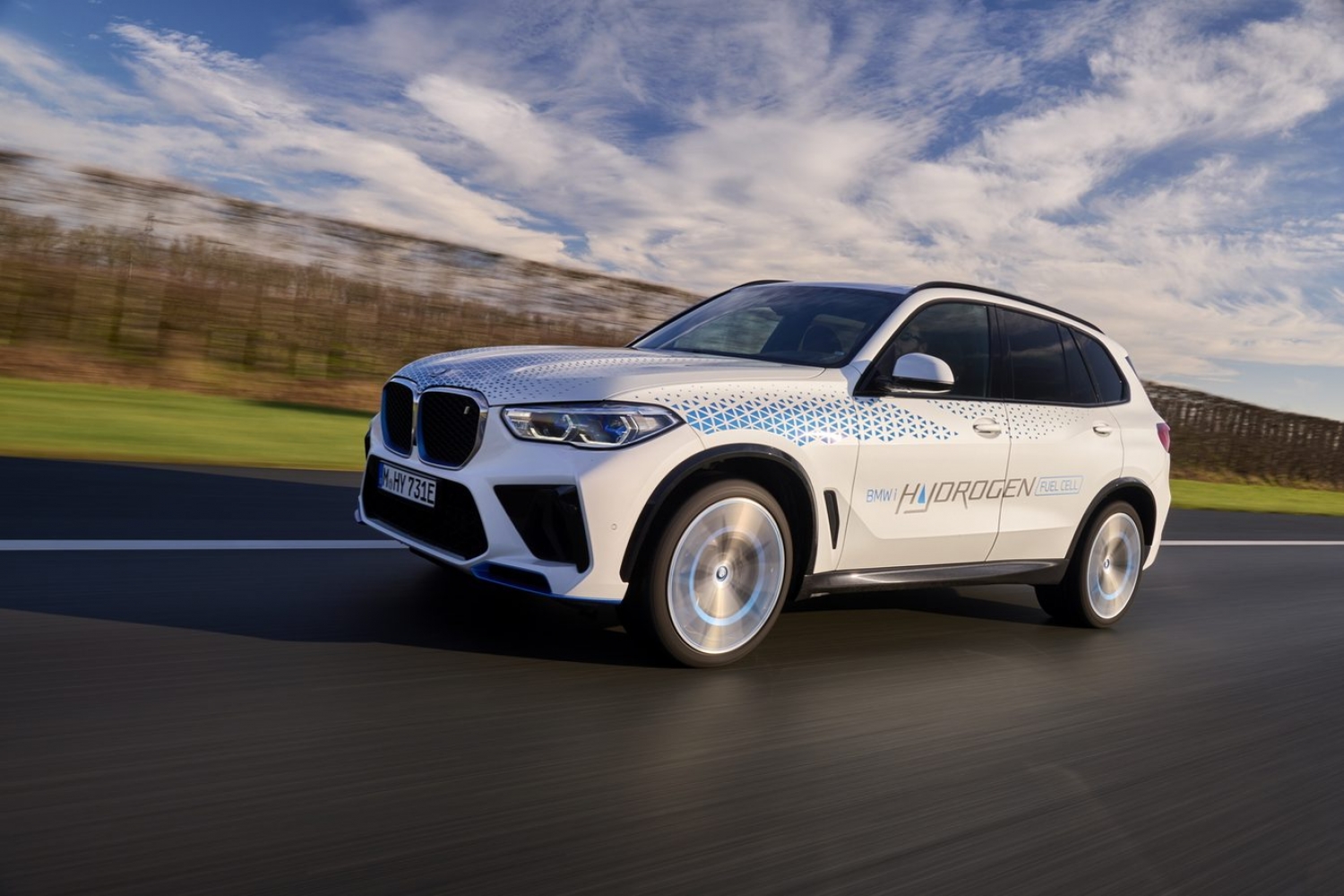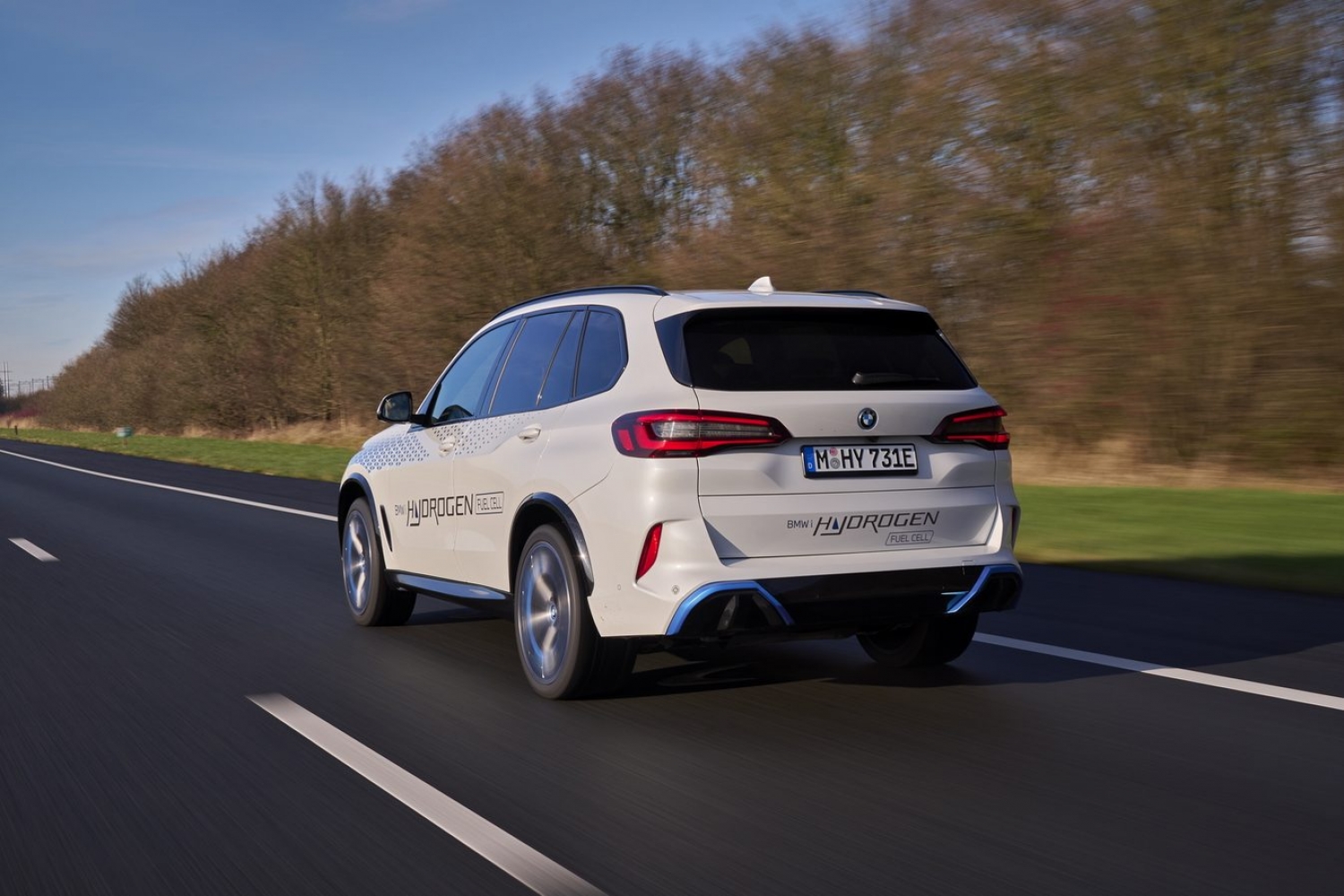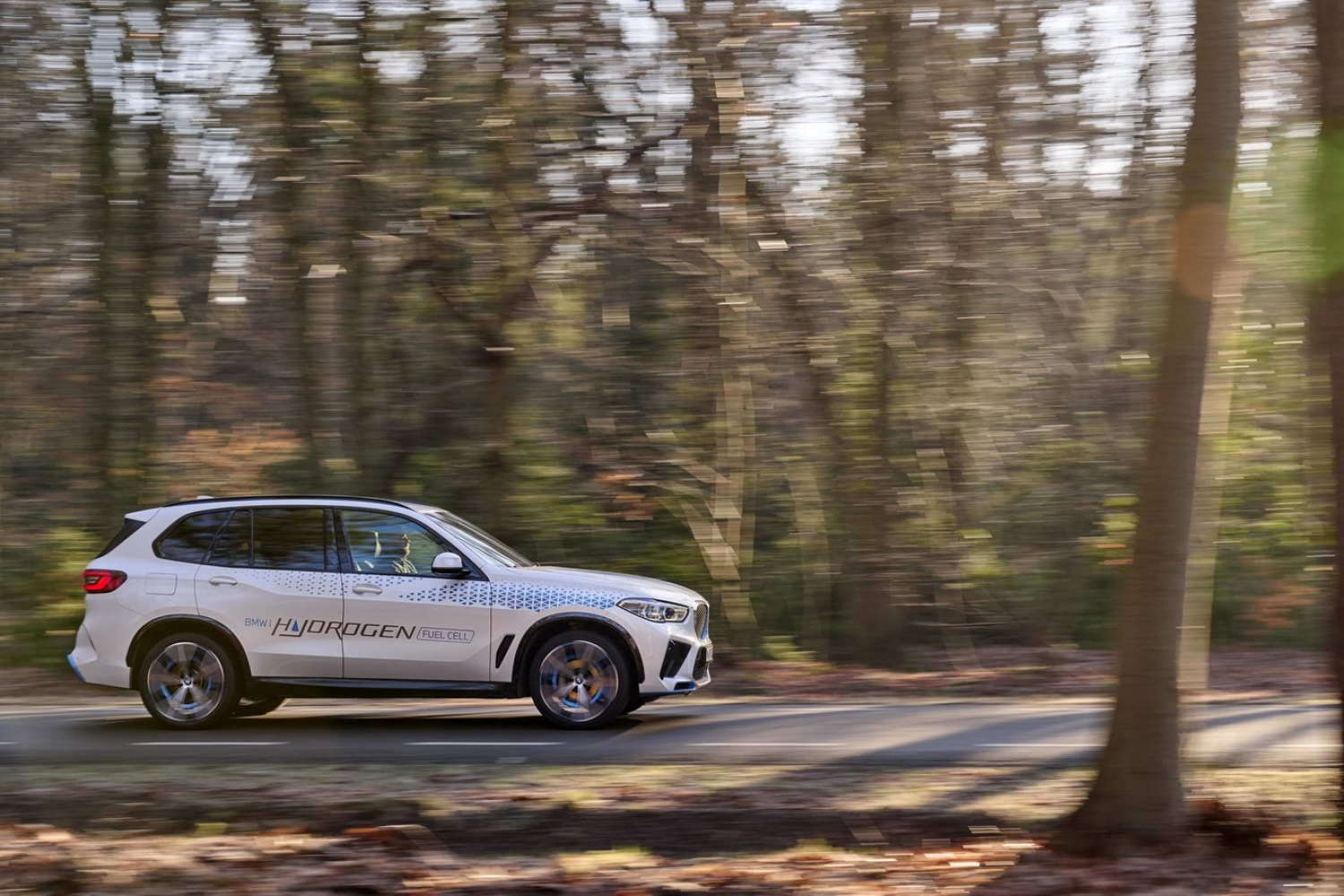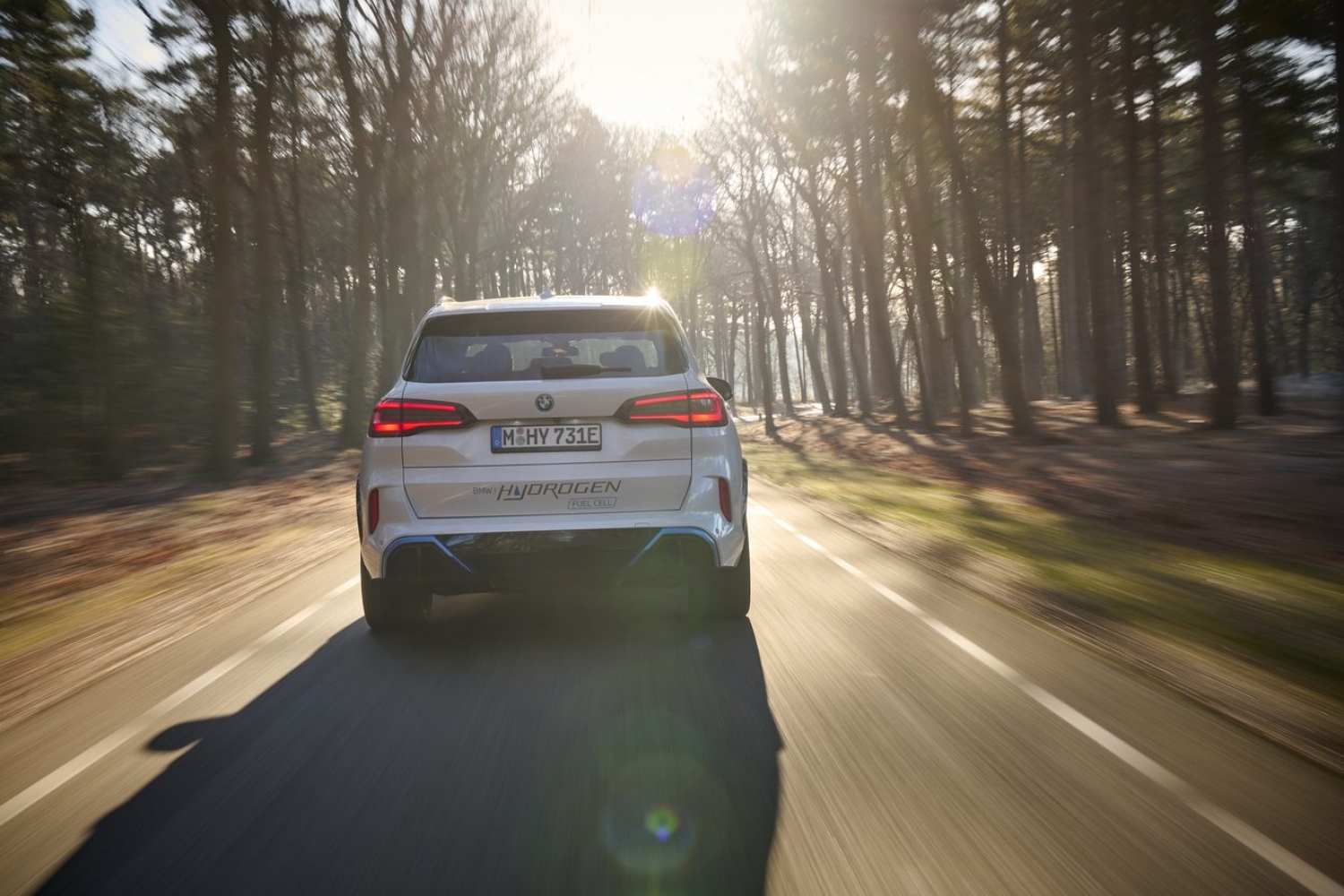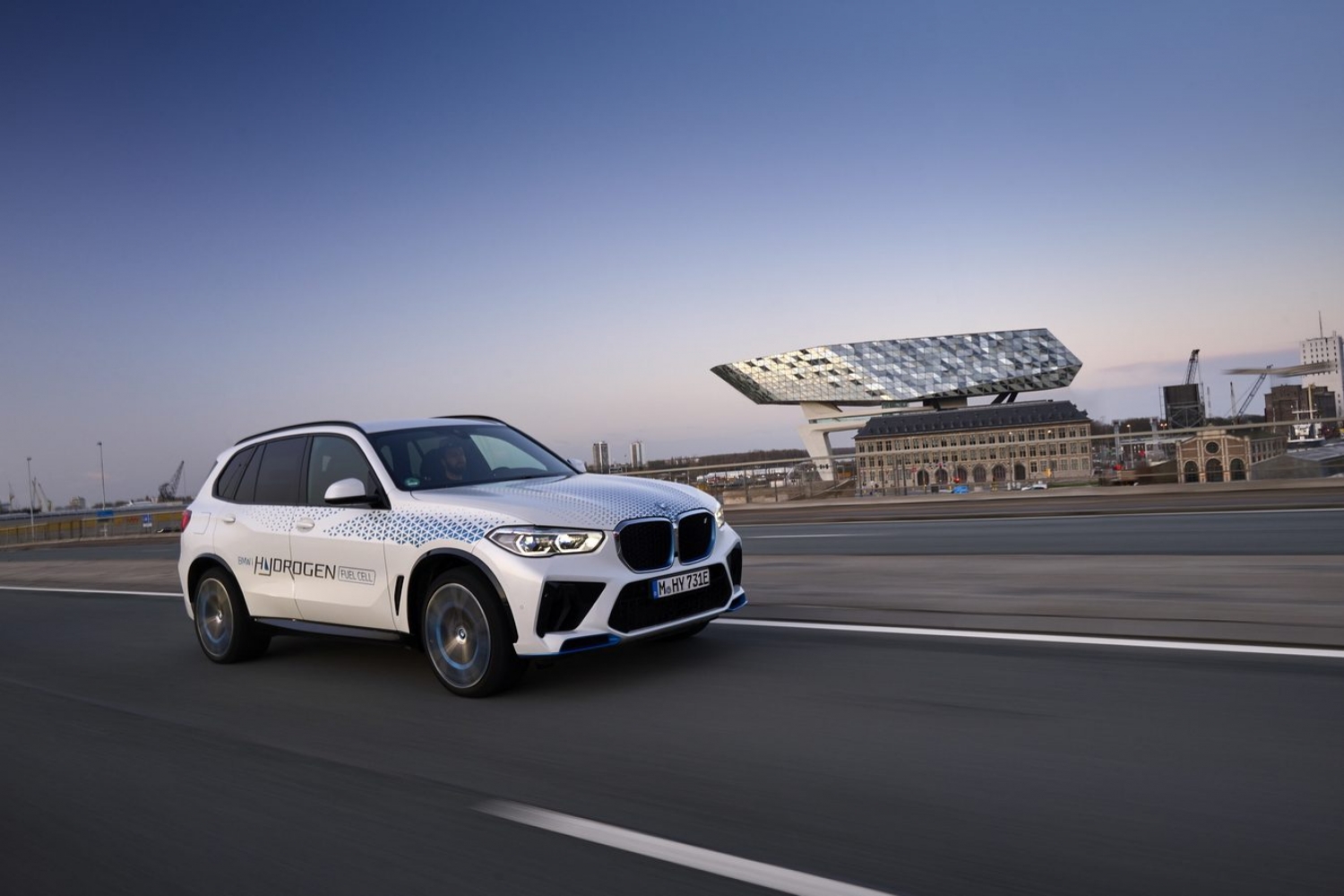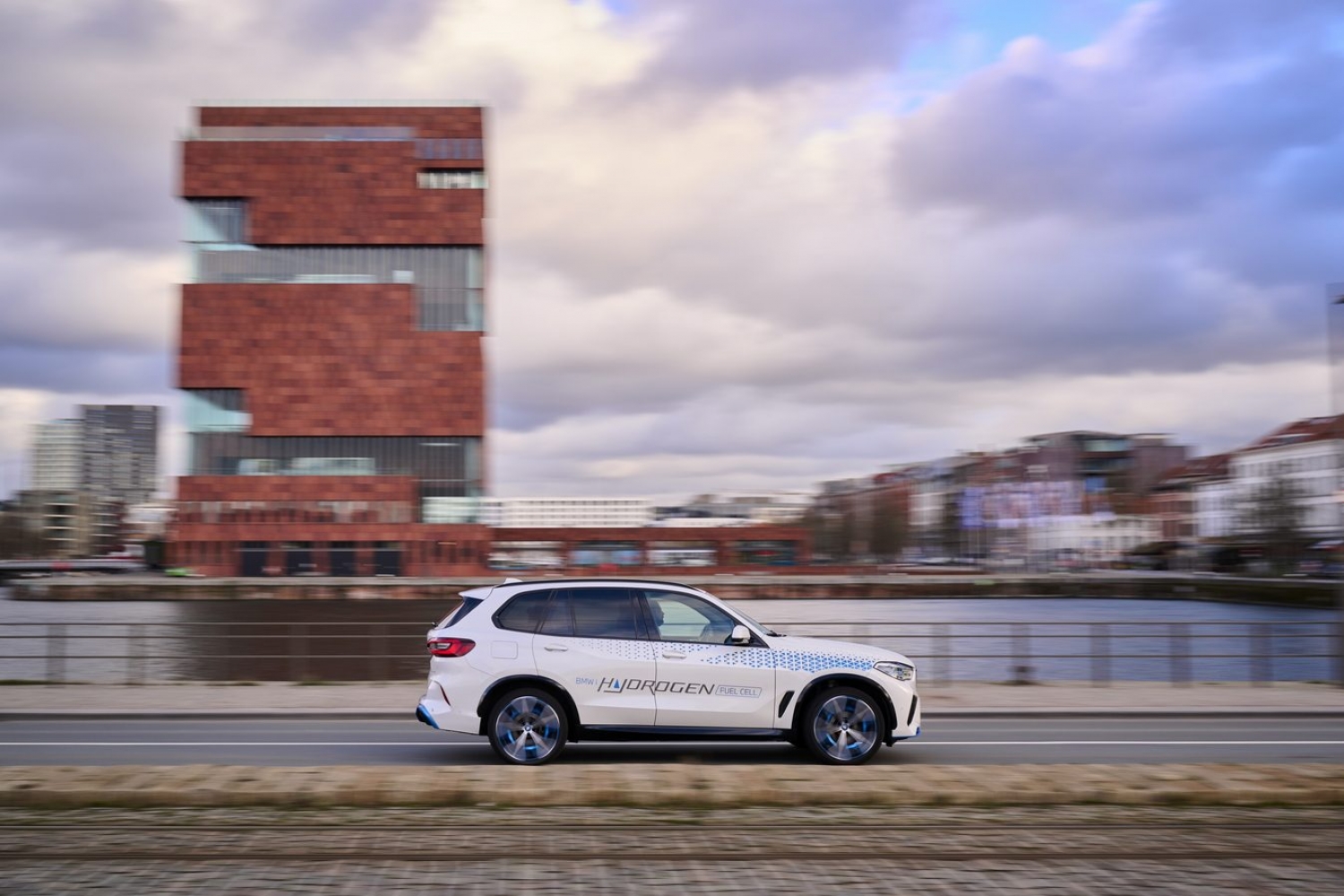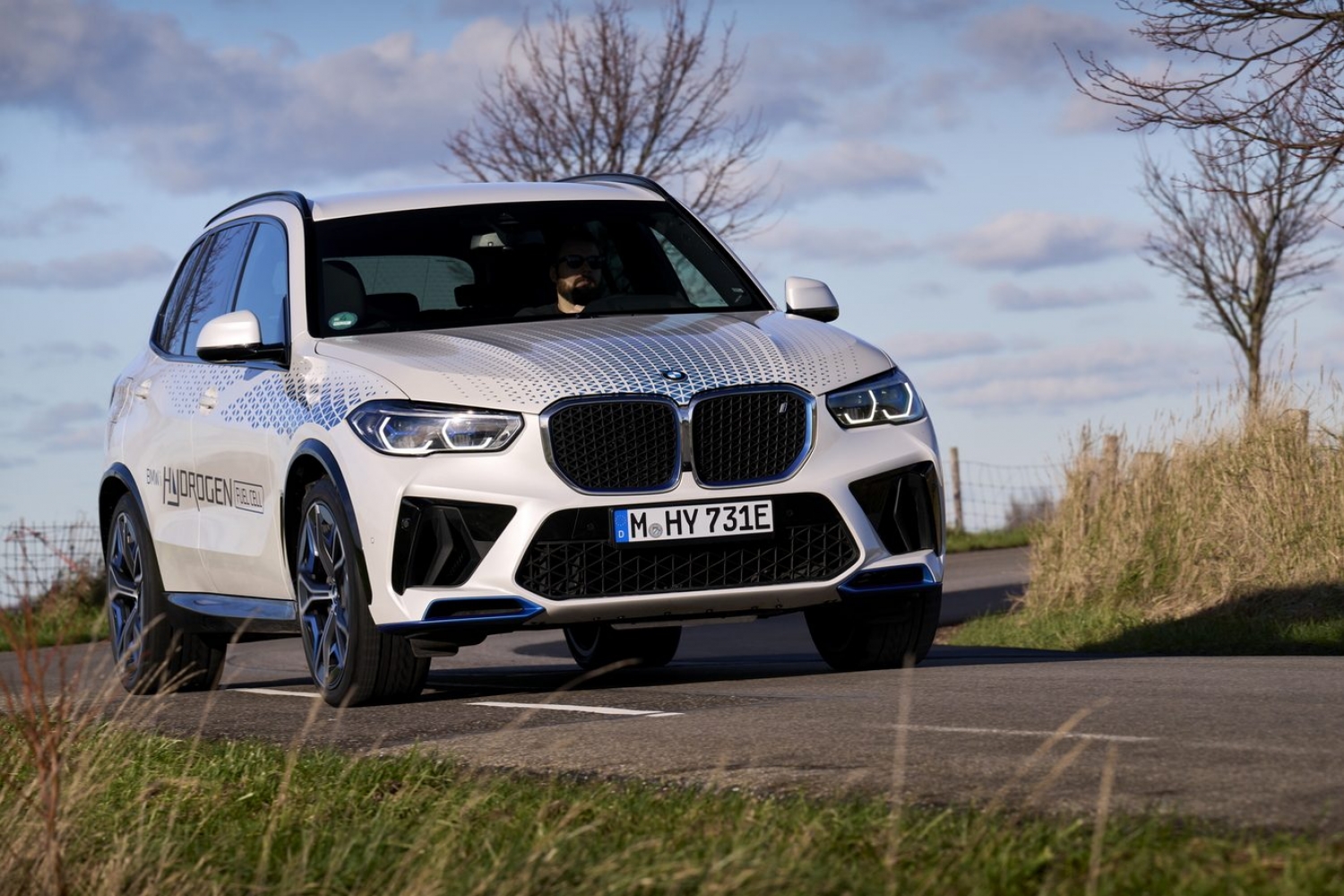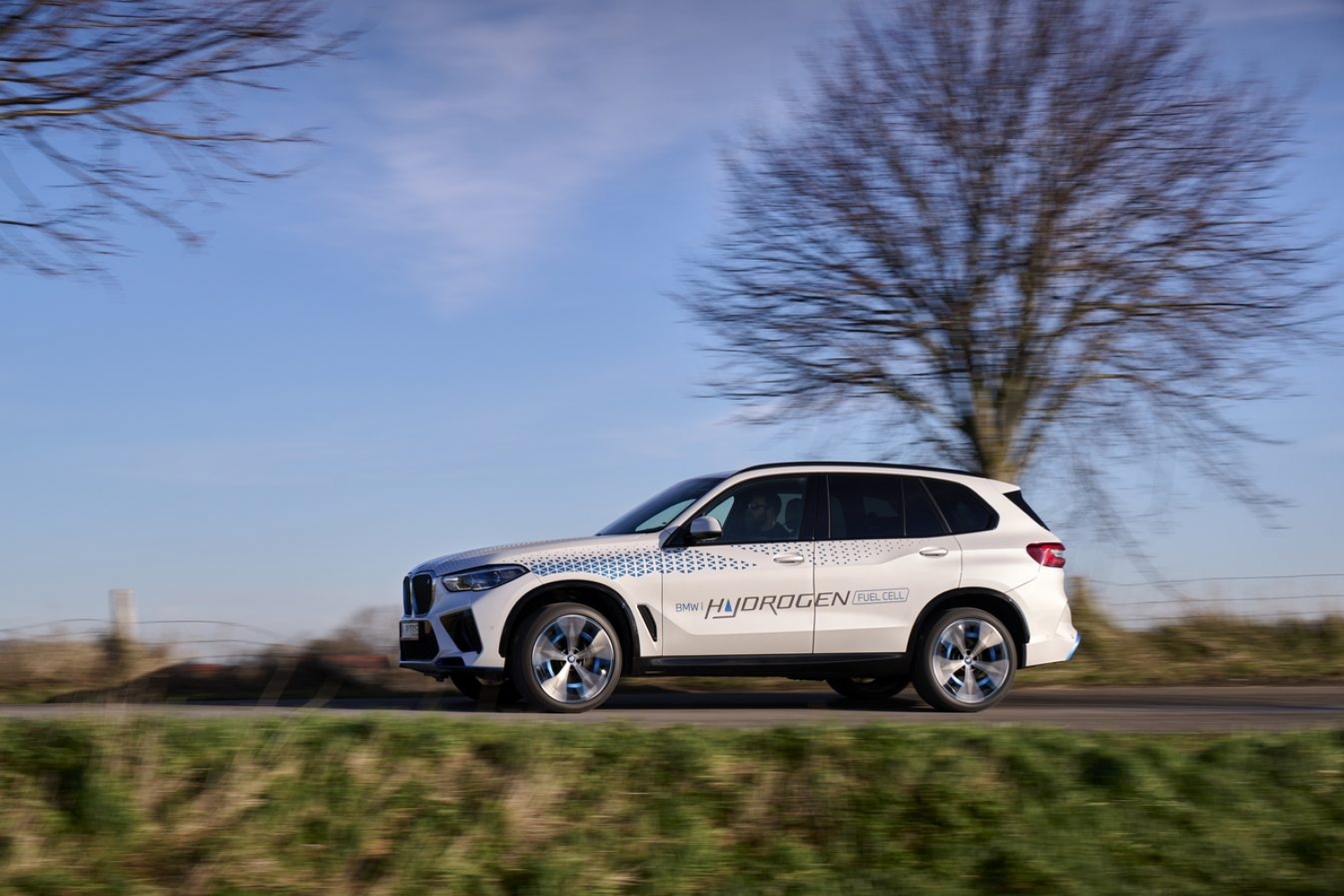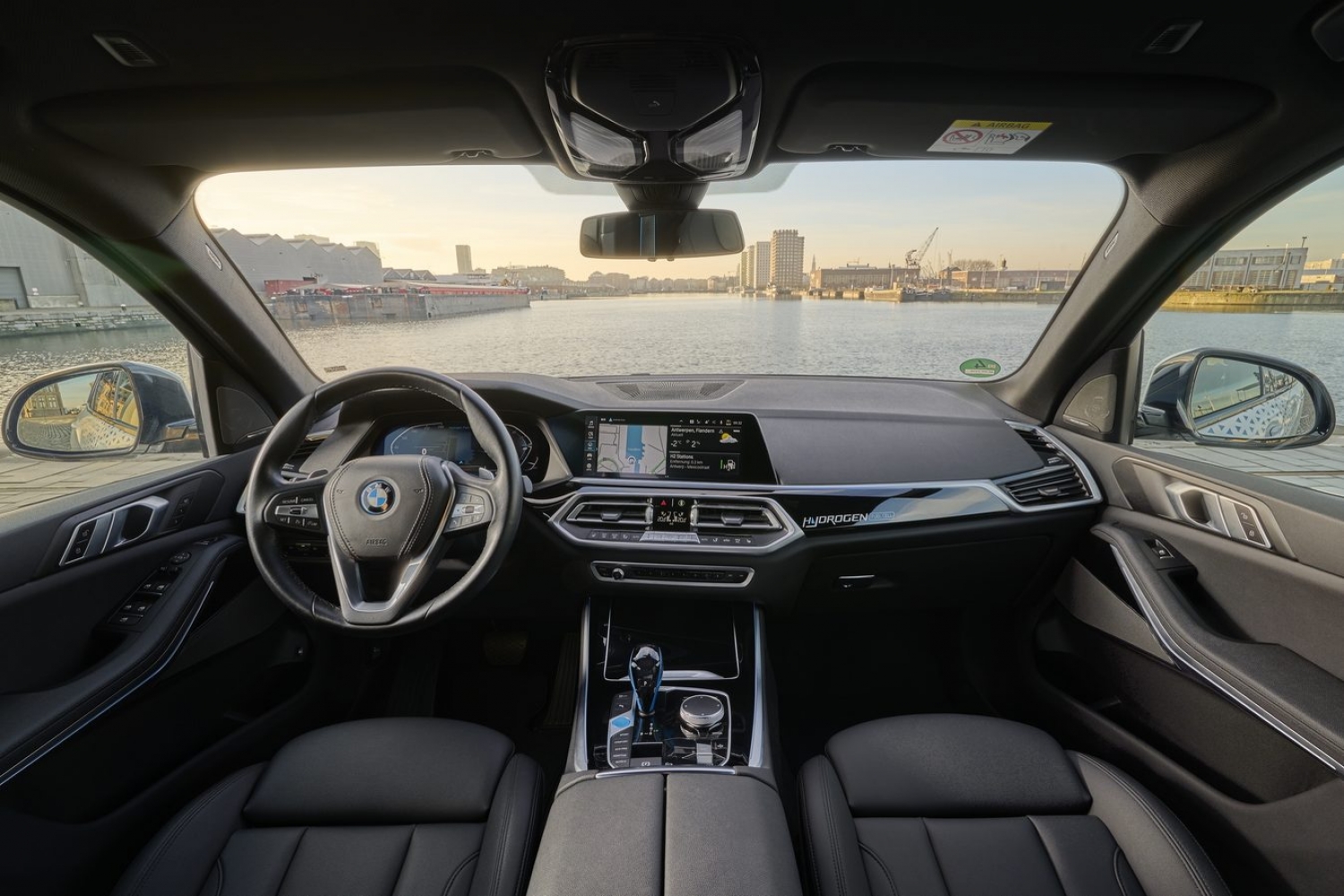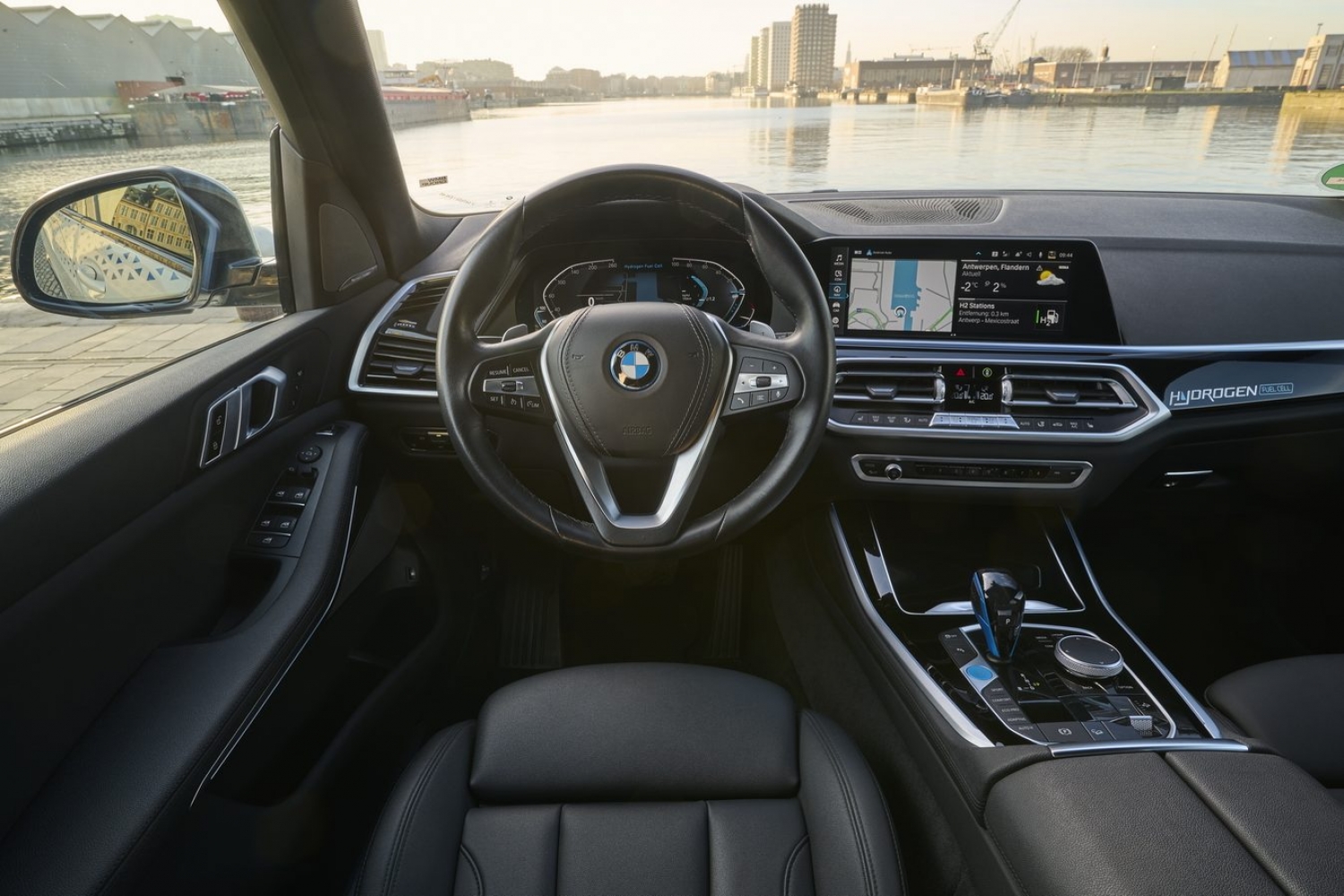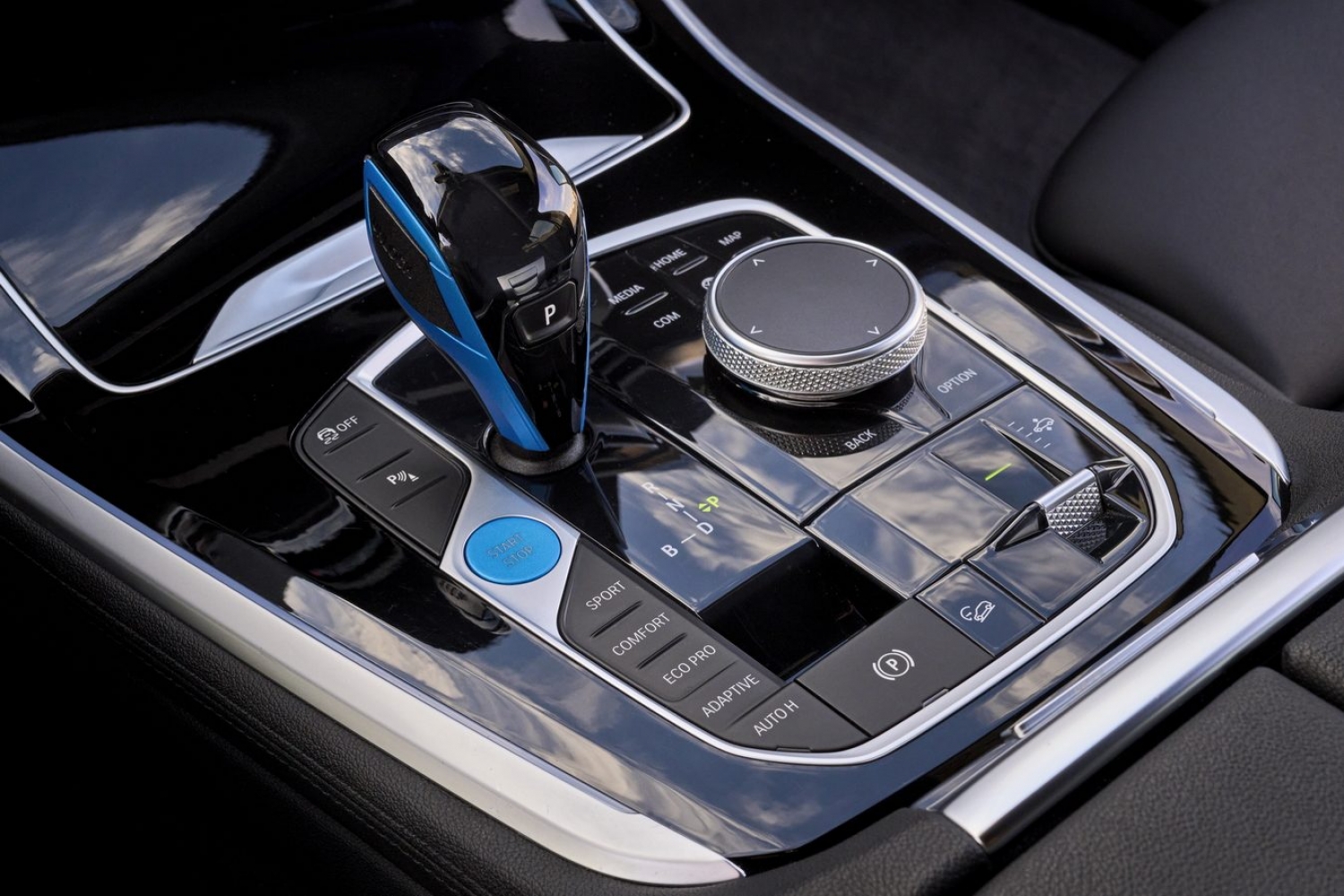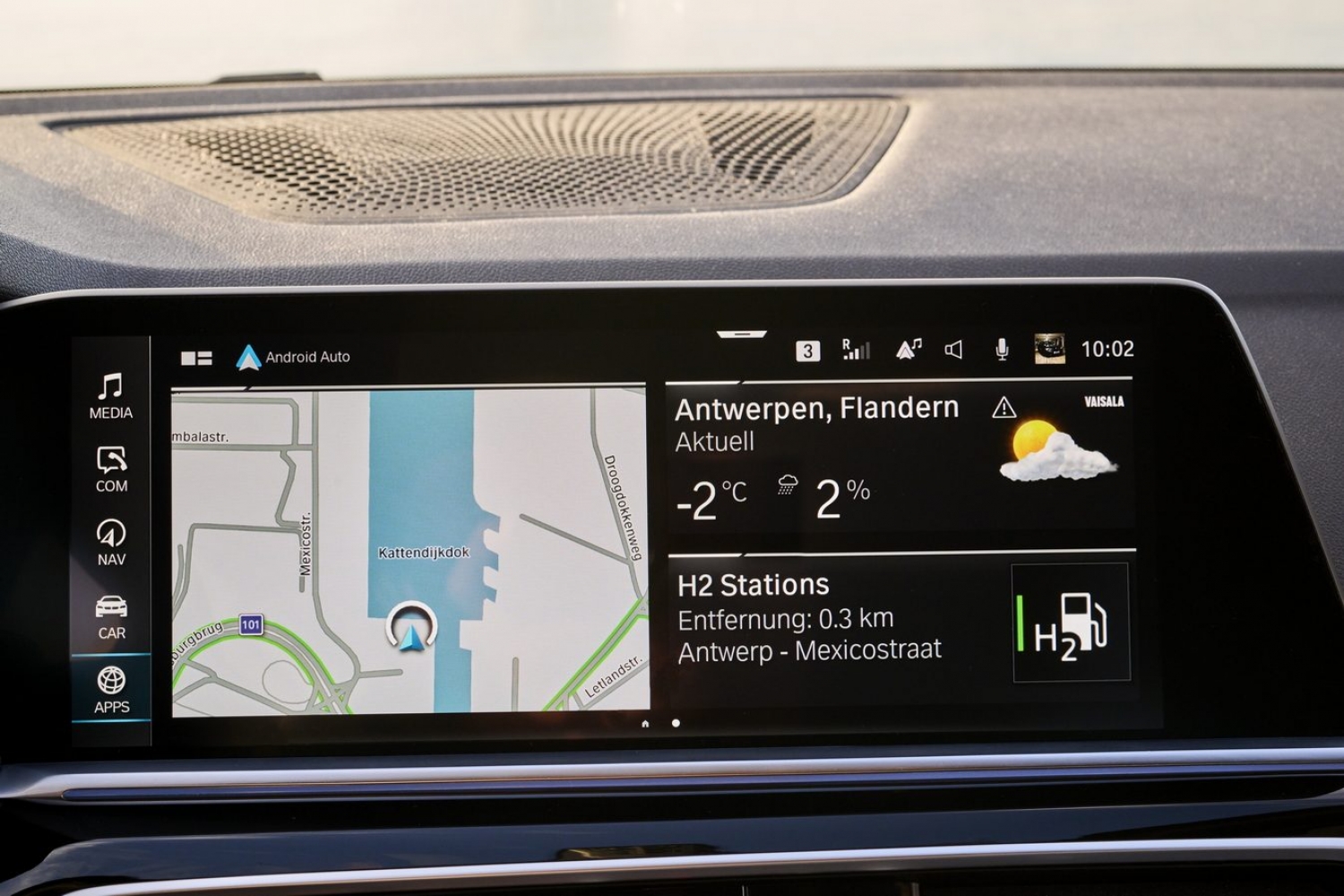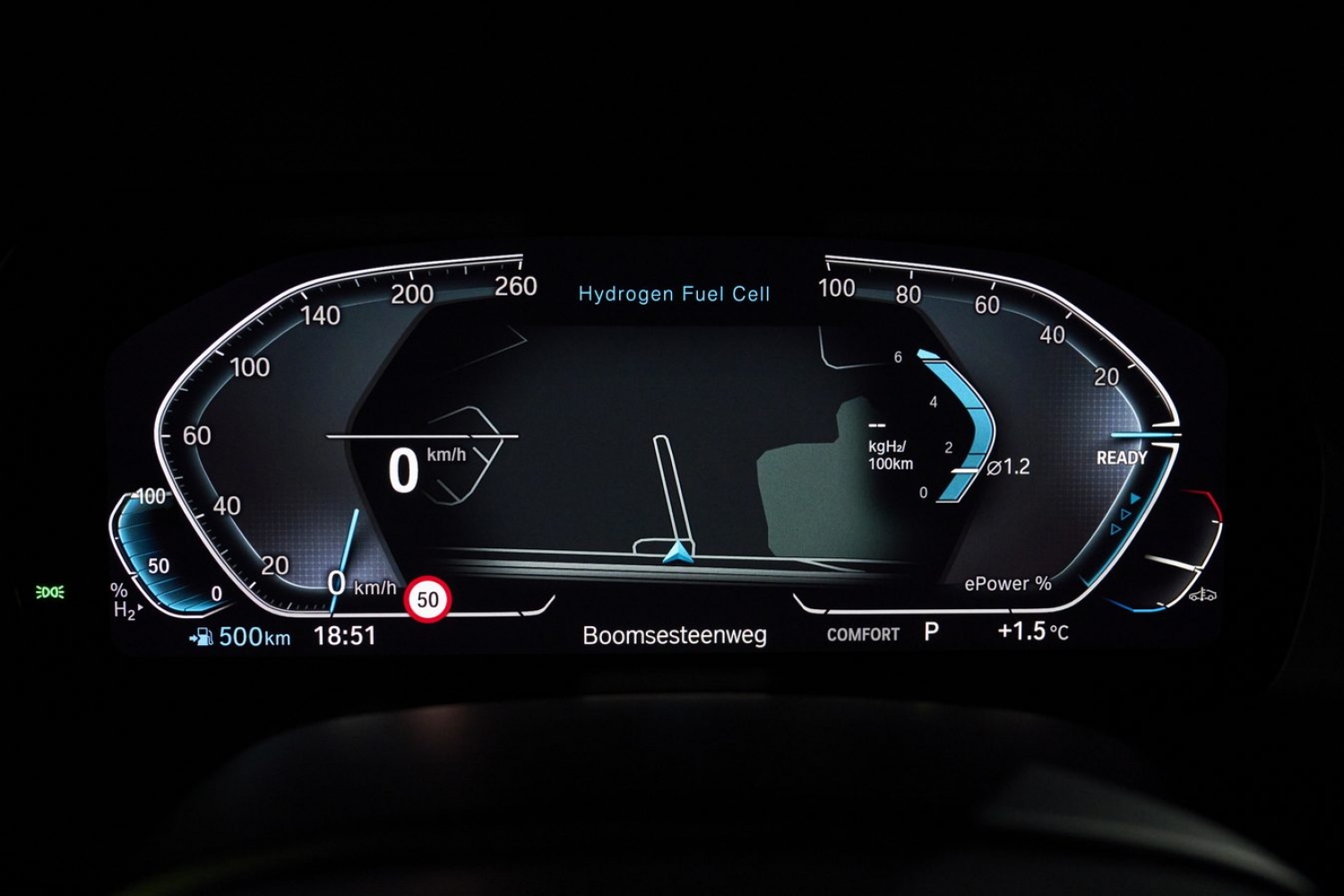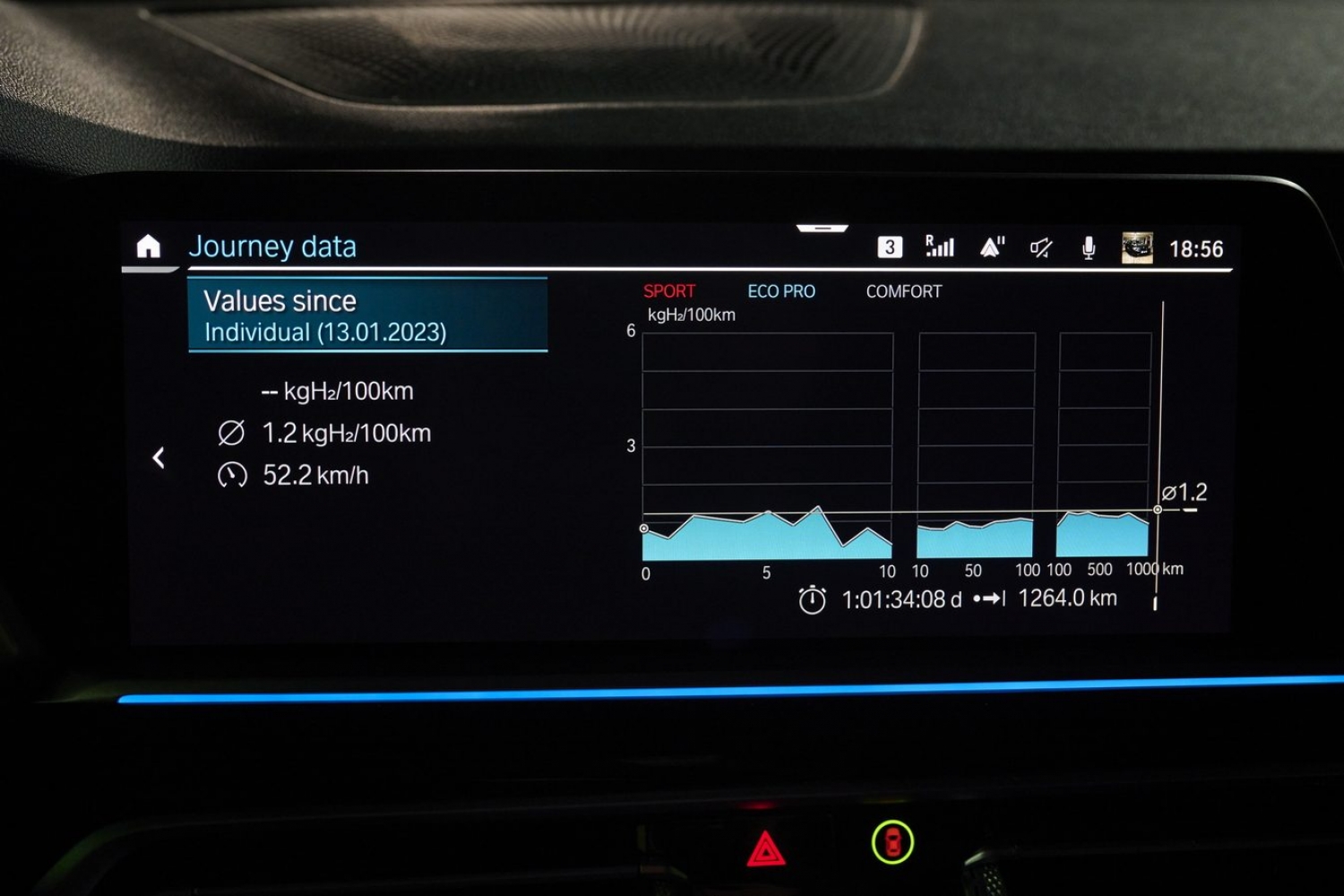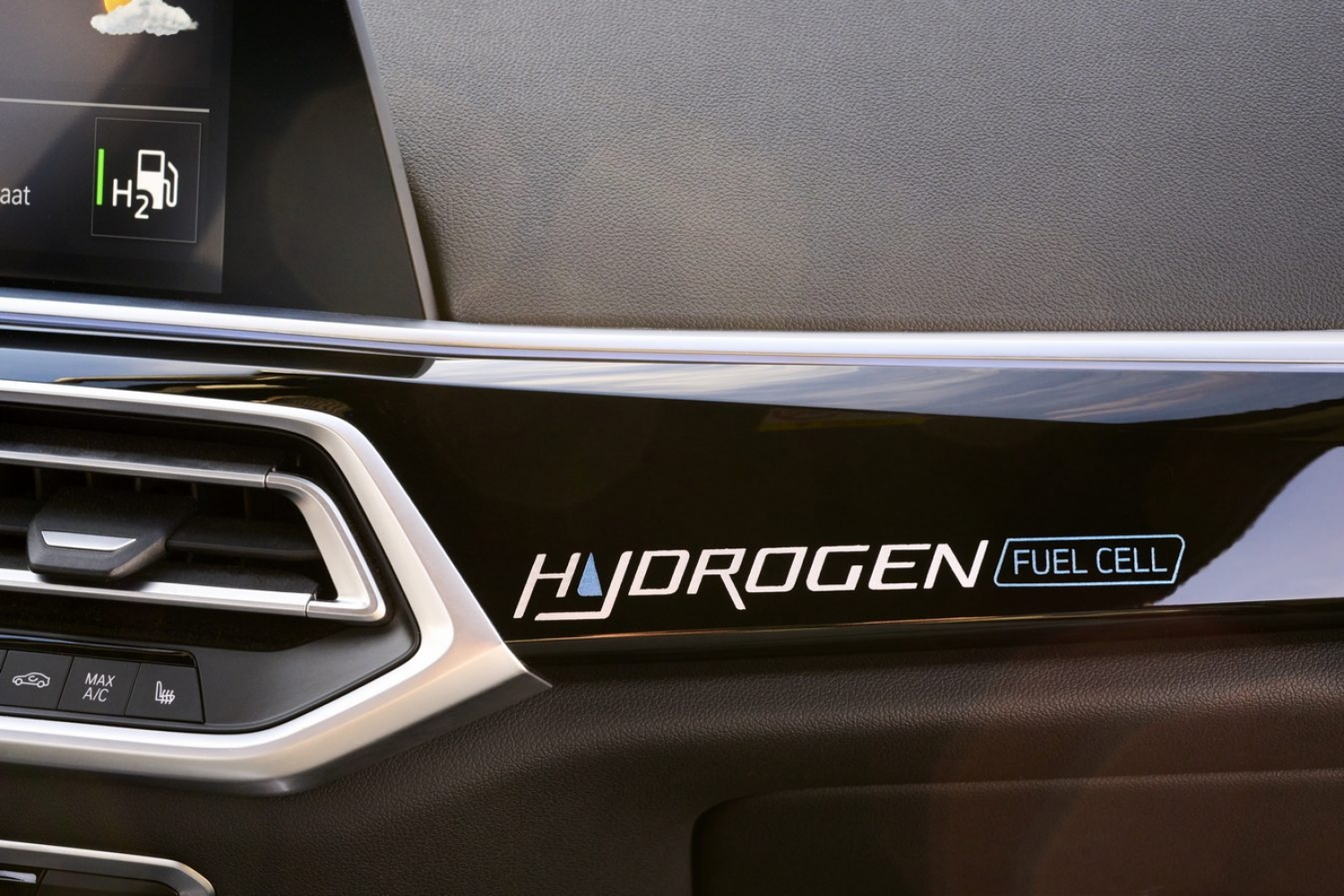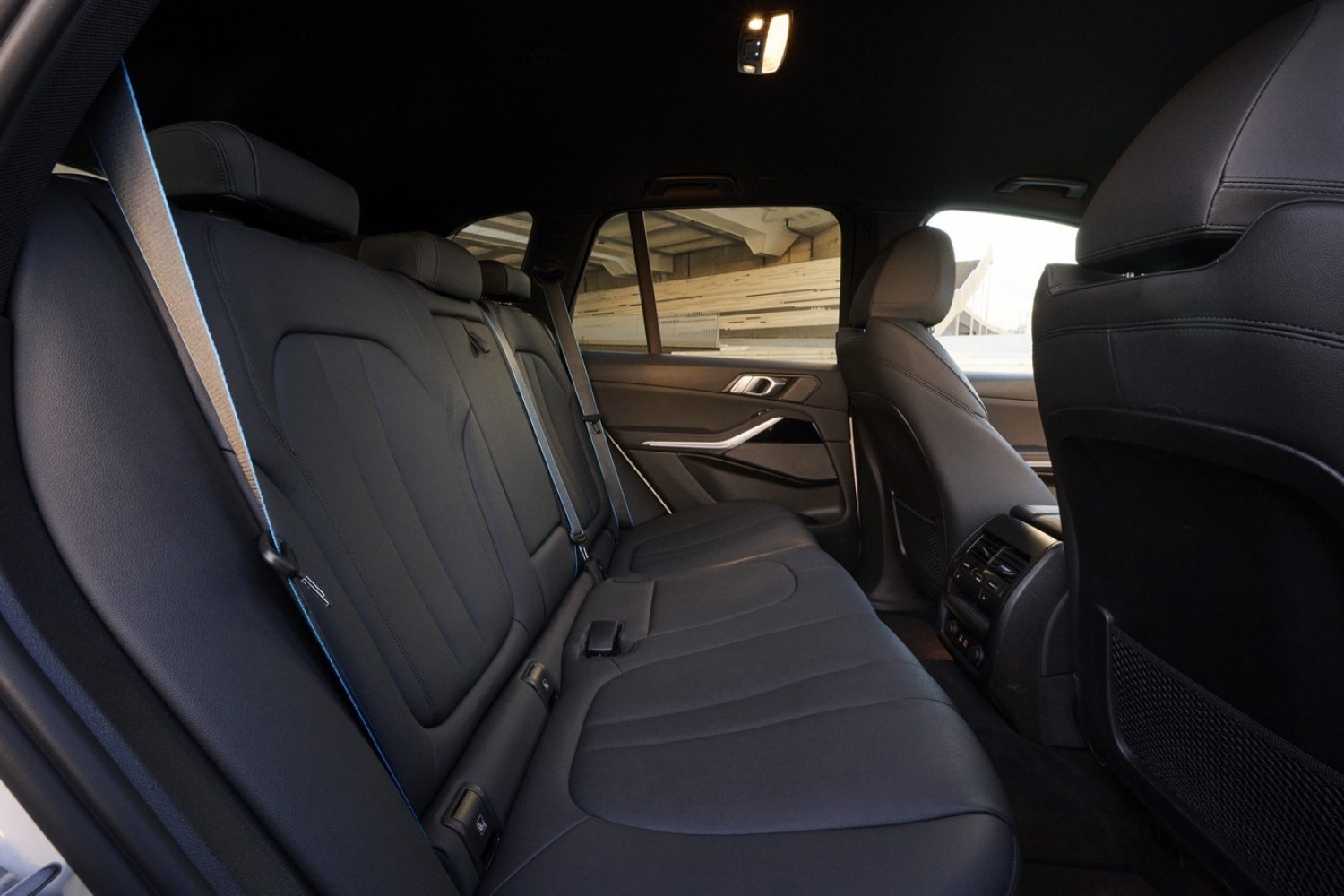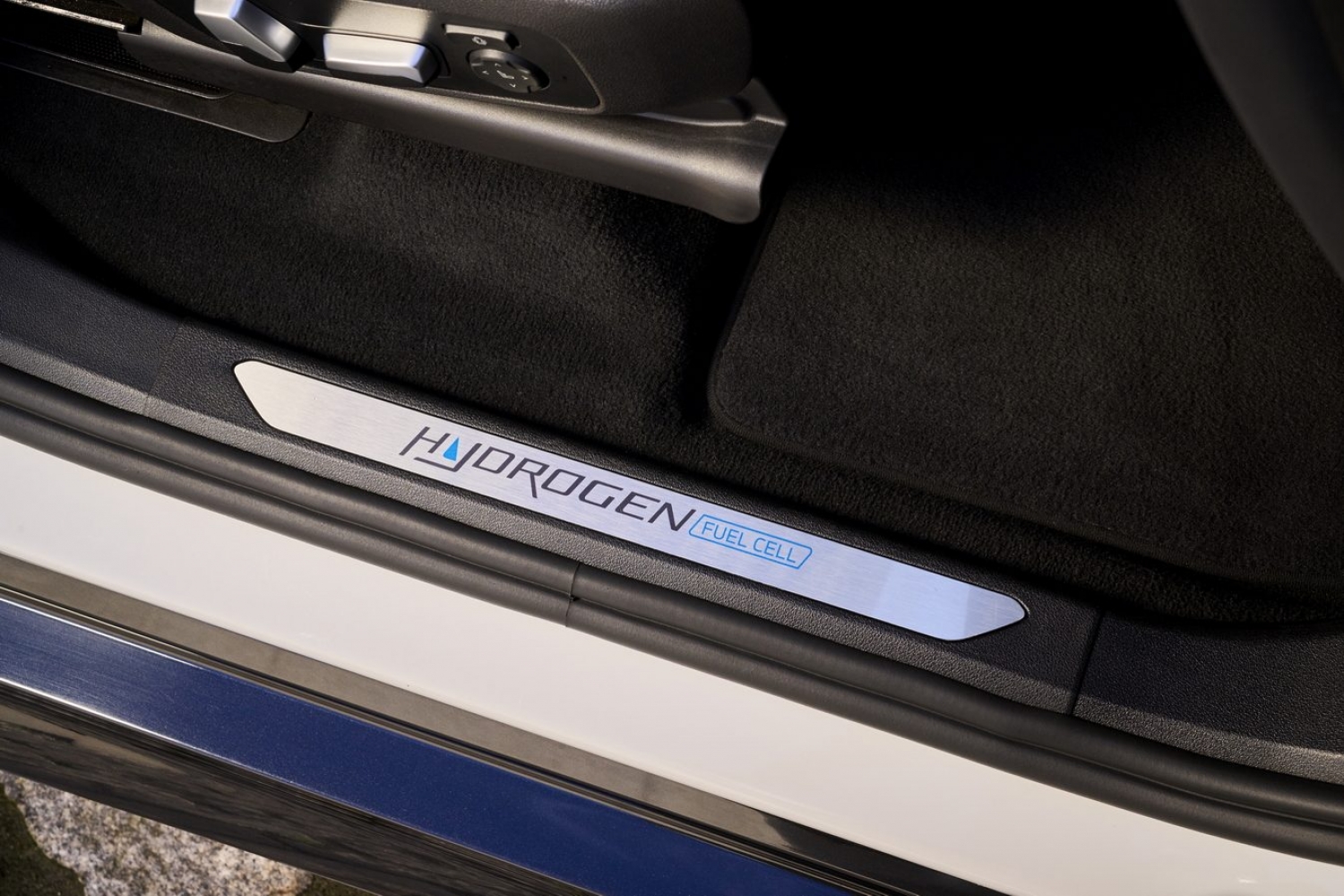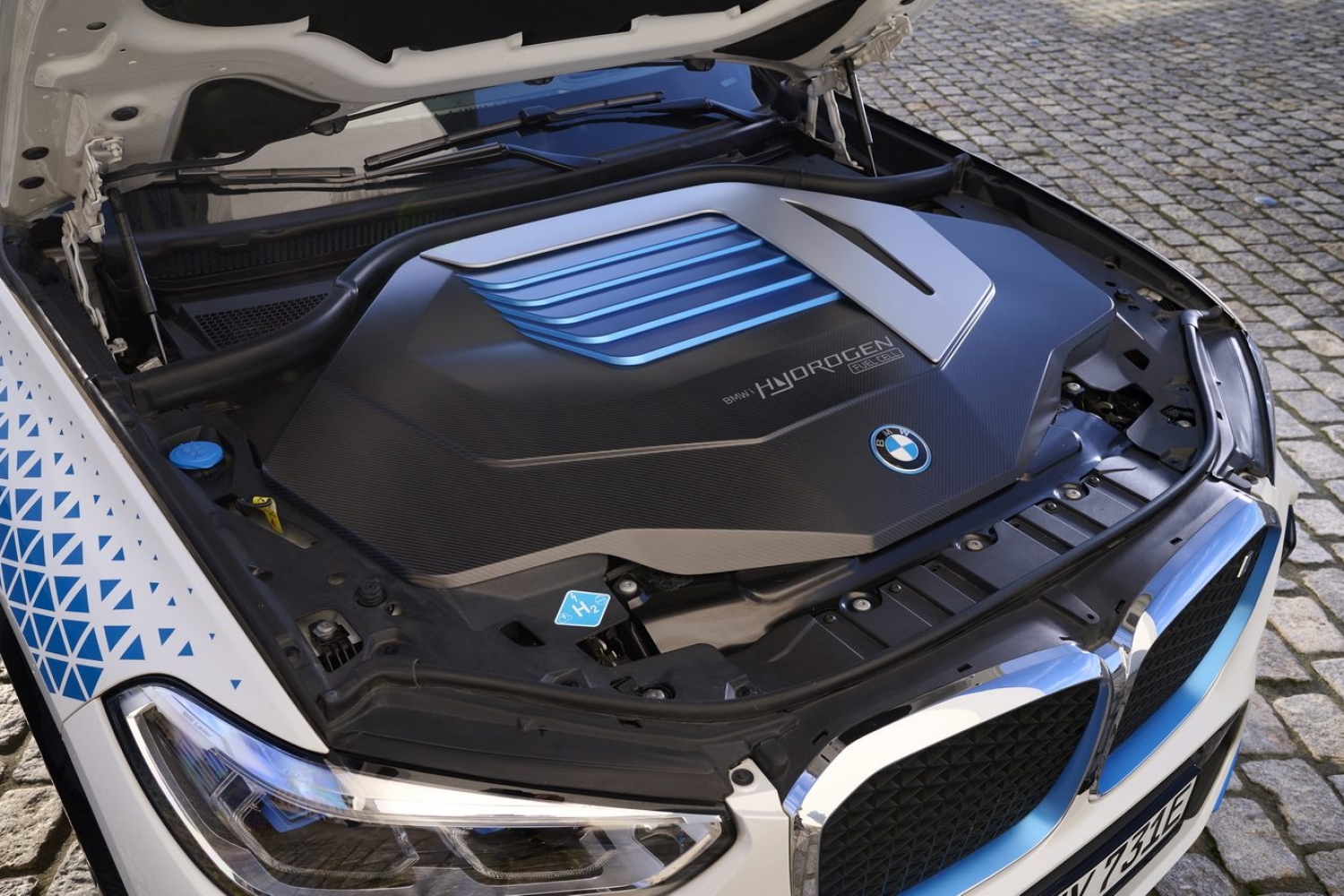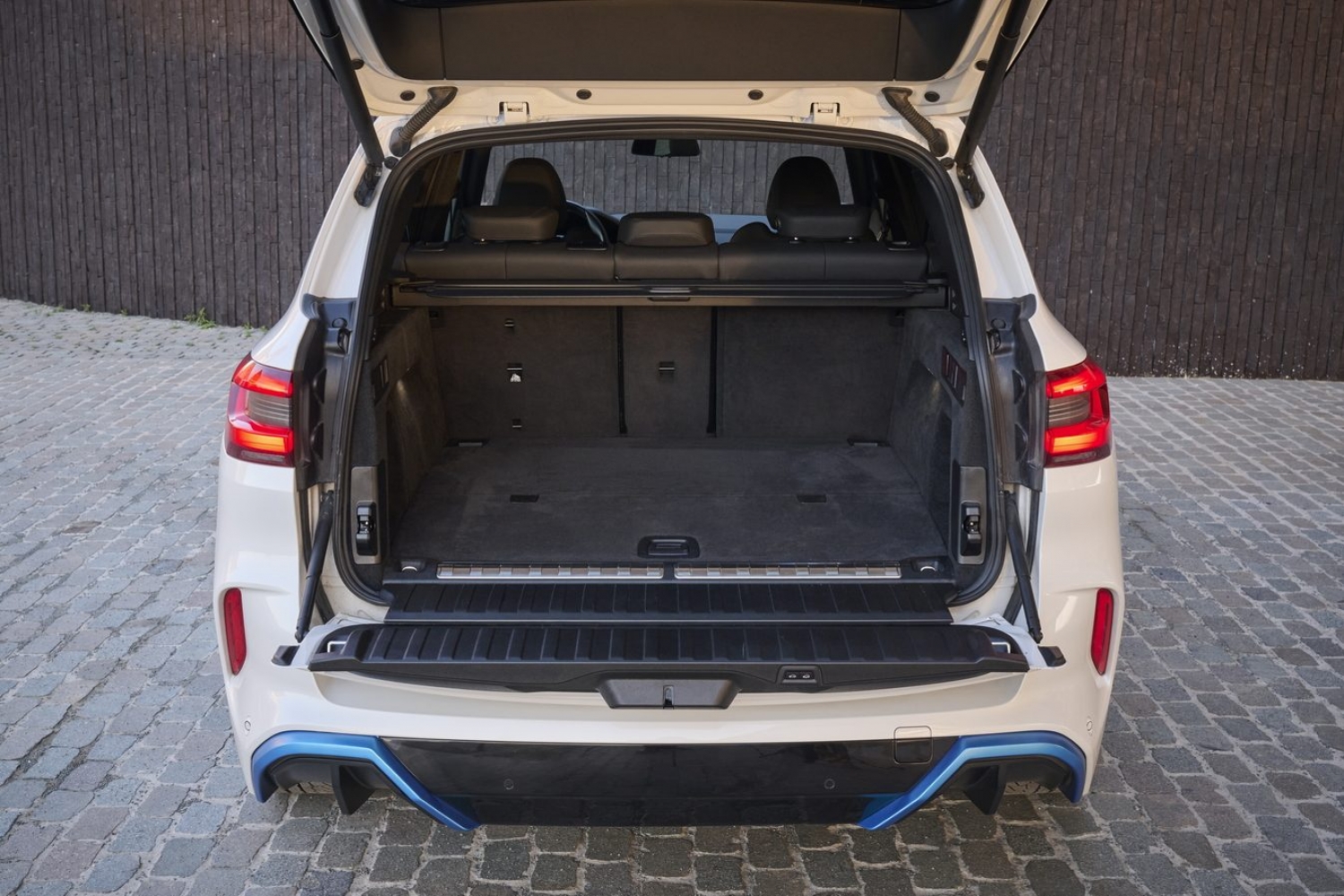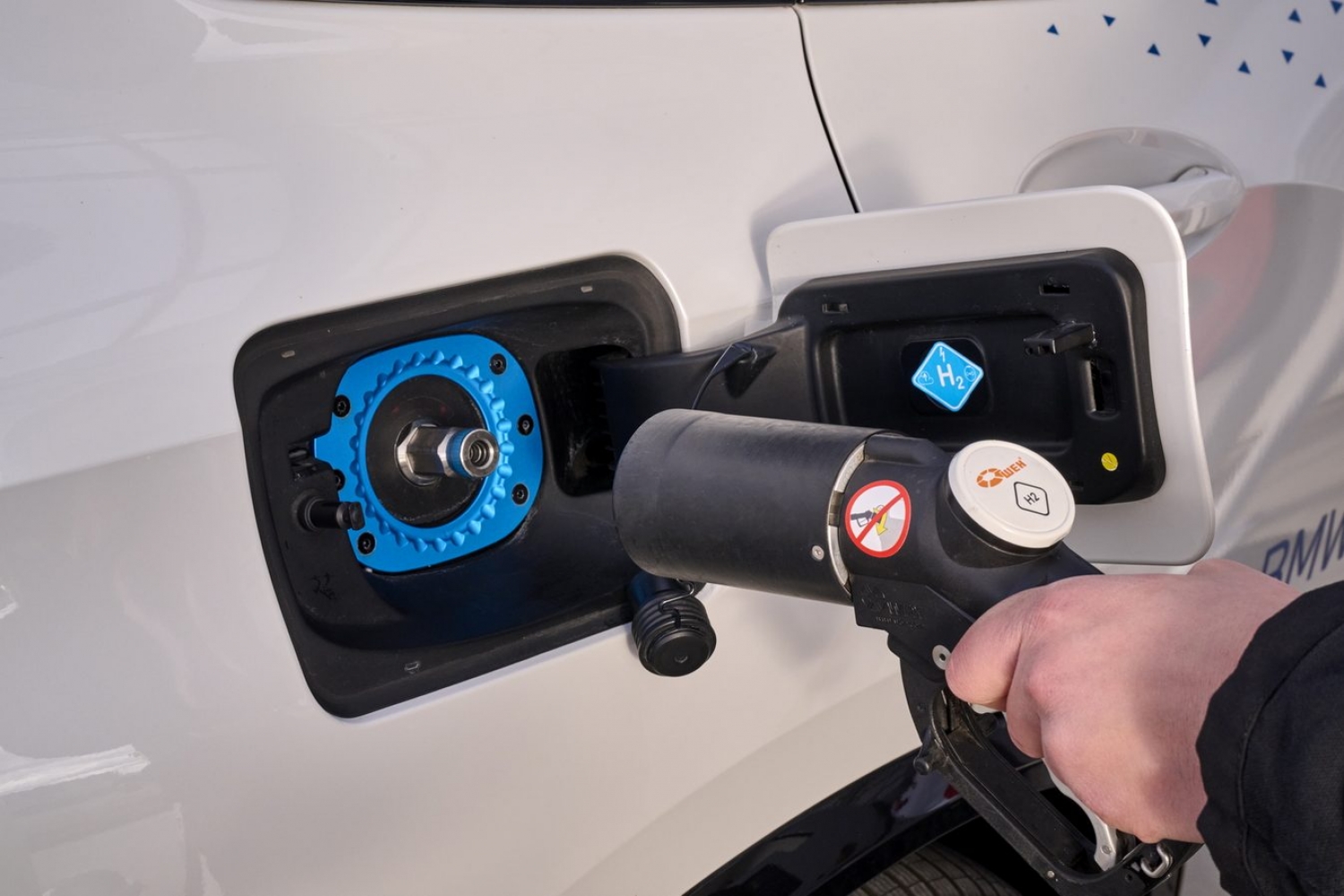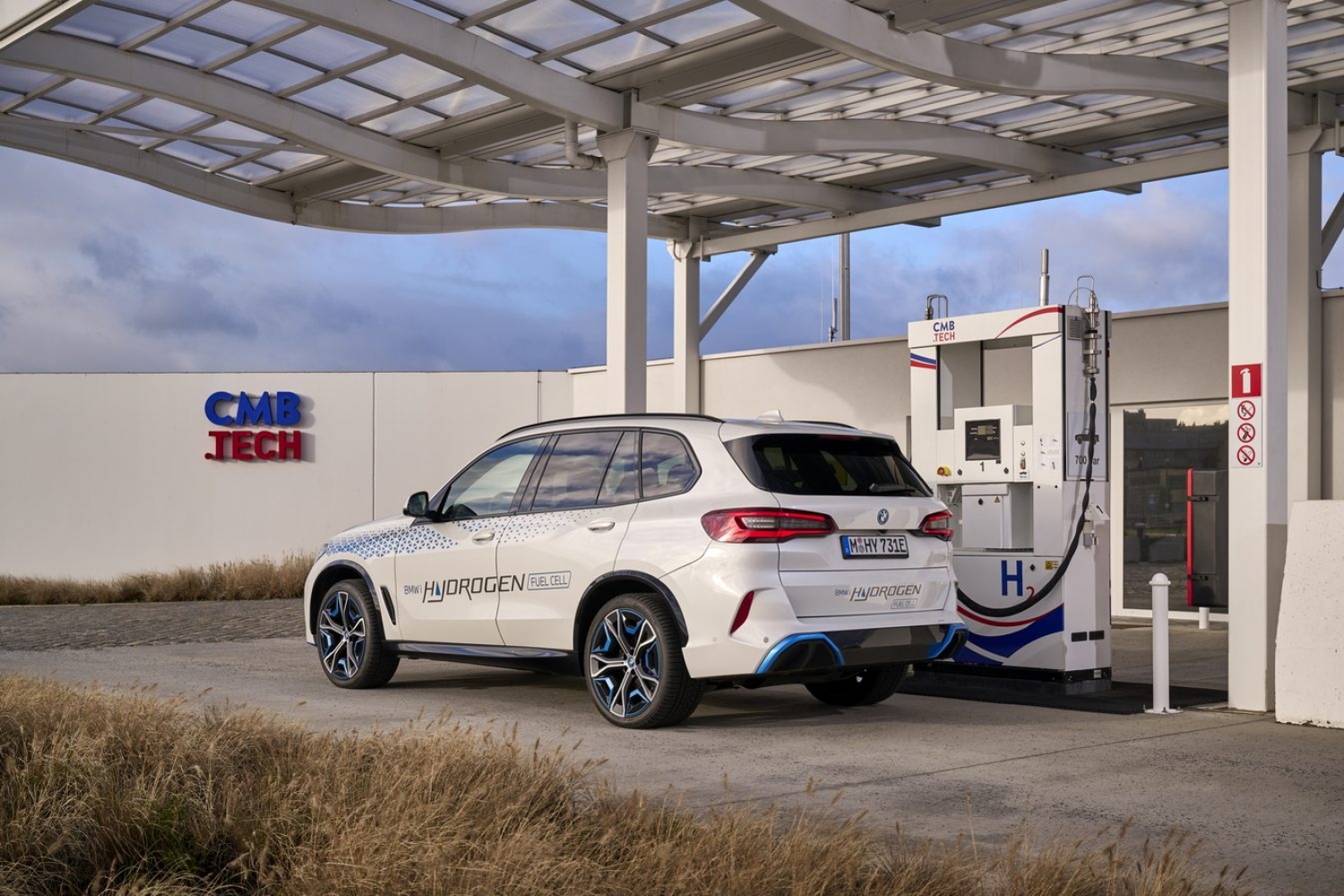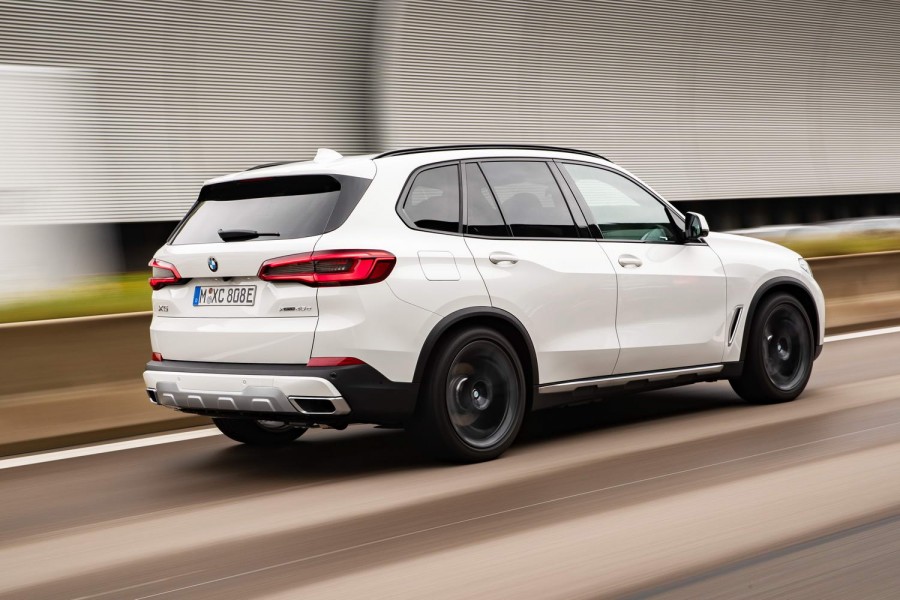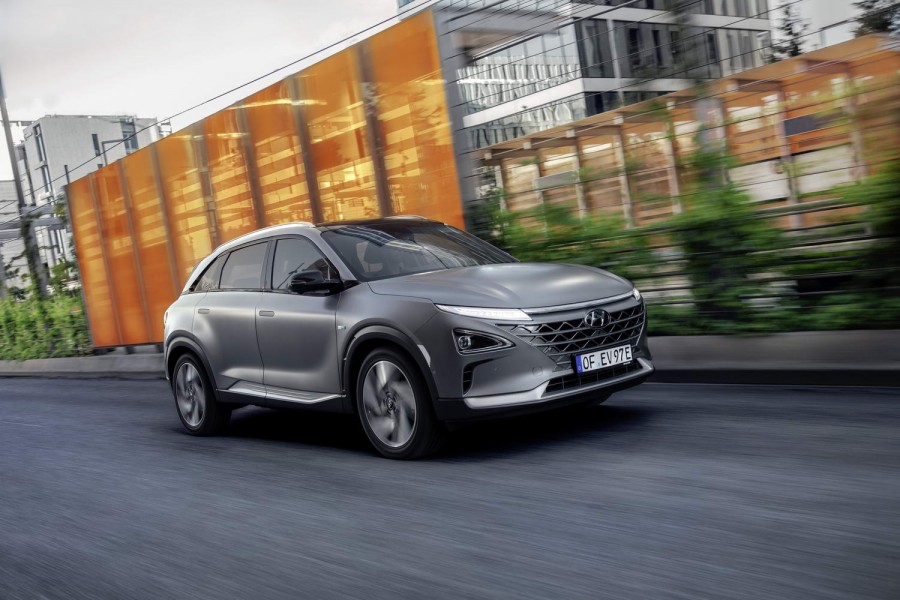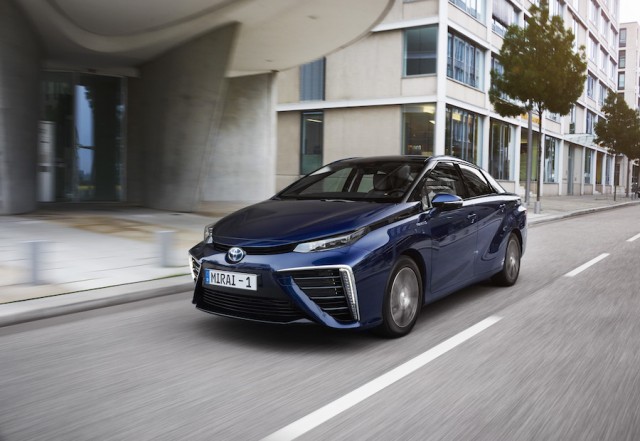Ironically, for an element that loves to hook up with other things, hydrogen has become quite a divisive fuel. Some say rapid fuelling times and the cleanliness of the fuel cell's sole emission (water) make it ideal for the vehicles of tomorrow, while others say hydrogen is too difficult to extract and too inefficient a fuel, particularly when you could make the electricity you need to create hydrogen in the first place and then feed it straight to the car. That way you cut the losses along the way.
Those ever-sensible Bavarians, on the other hand, take a more nuanced view. They reckon hydrogen fuel cells and batteries should work in tandem to bring down emissions, with Europe's smaller cars - the majority of those on the road - using batteries, while larger cars, vans and trucks can use hydrogen. For those who tow, regularly travel long distances or simply live where charging is difficult, BMW sees hydrogen as a potential solution.
After quite a long gestation period, the company is finally ready to let us loose in its pilot project - the iX5 Hydrogen. Essentially a fuel-cell X5, the car offers a 500km range and can be filled in five minutes, but it's just a test bed at present. Built in small volumes, it's here to teach BMW the ropes as it embarks on a lengthy test period, and there are no plans to put this car on sale.
In the metal
From the outside, the BMW iX5 Hydrogen looks very X5-ish. Or at least it does if you can ignore the blue-on-white livery BMW has adorned these test mules with. Were it not for the blue patterns down the side, the blue accents around the grille, bumpers and sills, and the 'Hydrogen' lettering emblazoned down the sides, you might be forgiven for thinking this was a conventional petrol- or diesel-powered BMW. The iX5 Hydrogen even has a similar grille to the internal combustion-powered versions because the fuel cells need to breathe in oxygen-rich air if they're to create any electricity. However, although the cells need to vent out the water vapour that's a by-product of creating that electricity, there are no tailpipes sticking out of the rear valance.
Inside, the story is much the same, with BMW maintaining the familiar X5 interior, right down to the instrument cluster and infotainment screen. Of course some of the displays are slightly different - economy is presented in miles per kilo of hydrogen, for example - but it's all very conventional inside, despite the blue trim on the dash and the bright blue starter button. In fairness, that's barely more lurid than the interior of a plug-in hybrid 3 Series, so it's hardly a great issue.
Naturally, the build quality and the technology on display are much the same as that of the conventional BMW X5, with similar materials and finish ensuring an upmarket, premium feel. Blue bits aside, it's just as classy a place to sit as an average X5's interior. That's partly because you get all the same technology, including the infotainment system and the digital instrument display, as well as the iDrive rotary controller that makes BMW's infotainment one of the best in the business.
Interior space is good, too, with much the same cabin as the X5 xDrive45e plug-in hybrid. That means you get a 500-litre boot (down 150 litres on the standard X5, but still as much as you get in a 3 Series Touring) that expands to more than 1,700 litres when you drop the rearmost seats.
That space exists primarily because BMW has managed to squeeze the iX5 Hydrogen's running gear into the space normally taken up by the X5 xDrive45e's transmission tunnel, fuel tank, battery and motors. Deep in the bowels of the car is a pair of pressurised tanks carrying up to 6kg of hydrogen at 700 bar - the same level of pressurisation set to be used in hydrogen trucks.
Those tanks feed a bank of hydrogen fuel cells taken from the Toyota Mirai as part of BMW's collaboration with the Japanese brand, and the electricity produced there is used to fuel a small high-performance battery, allowing instant acceleration. When that isn't required, though, the fuel cells send their electricity straight to the motor, which is much the same as the ones found on the existing BMW i4 and iX electric vehicles. However, unlike the i4 and iX, the iX5 Hydrogen has a small battery, which means fewer precious metals are needed to build it.
Driving it
The powertrain is, of course, central to the iX5 Hydrogen's driving experience, but not in the way you might expect. On the road, it feels like an electric X5, with no real suggestion that there's a bank of hydrogen fuel cells whirring away to produce the electricity that's driving you. Instead, you just get a quiet, yet very punchy, zero-emission powertrain. Okay, it's a one-emission powertrain, but as water is generally considered fairly benign, we'll give it a pass.
But the hydrogen creation problems are for the infrastructure people, rather than BMW, to unravel, and the German company can proudly (and rightly) claim the iX5 Hydrogen emits no carbon dioxide from its powertrain. This is, therefore, essentially an electric vehicle, which means were it to go on sale in Ireland, it should be subject to all the same advantages as a battery-powered vehicle.
That includes the power and acceleration you tend to get from battery-powered cars. In all, the iX5 Hydrogen has just over 400hp, with which it can get from 0-100km/h in less than six seconds and on to a top speed of more than 180km/h. And because of the way in which electric motors work, it feels urgent and powerful, which makes it great for overtaking or nipping through traffic.
But the advantage of hydrogen power is the range. And not just the range on one tank, because while a total official distance of just over 500km to the tank is matched by a lot of electric cars, the best bit is the five-minute fill-up time. Simply pull up to the pumps, unlock the filler cap and couple up the nozzle and hose (you can do all this with one hand), then press the green button and hey presto, the car and pump do a few pressure checks, then filling begins. You can stop it at any time you like using the red button, or it'll just stop when the tanks are full. You don't even have to hold on while you're filling up.
In short, it's just like filling up a petrol or diesel car, albeit with a few minor adjustments. At present, most hydrogen pumps take an RFID card, a bit like an electric car charging membership, but newer ones will have card readers like self-service petrol pumps.
Speaking of money, that's one of the slight sticking points with hydrogen. At the moment, certified low-carbon hydrogen is quite expensive - about €23 per kilo at the pump - and the iX5 takes on six kilos of the stuff to do 500km. But as it becomes more common and hydrogen trucks, ships and vans become a regular sight, production will have to increase and prices seem likely to fall, at least in relative terms. Nevertheless, with an iX5 Hydrogen officially managing around 85km per kilo of hydrogen, the price isn't currently so different to running an X5 M Competition on premium unleaded, for example. And as industry bigwigs point out, the prices of petrol and electricity aren't likely to remain stable.
But is 85km per kilo realistic? Our test suggested it would be, if you don't spend too long at motorway speeds. Either way, though, you're certainly looking at 400km between fill-ups and with a top-up taking about five minutes, you can probably do 800km in the time it would take a long-distance EV to do 600. That only applies, though, if you can find a hydrogen filling station, and they're rare at present. But new European rules mean they will soon be cropping up at regular intervals on motorways and in major towns and cities. When they arrive and in what numbers remains to be seen, but suppliers are bullish about their prospects.
If all that happens, running an iX5 Hydrogen or something similar would become a very pleasant experience, not dissimilar to running a petrol or diesel X5. The car might be quieter and smoother than a petrol version, but the ride is similar, if occasionally a little brittle at low speeds thanks to the big wheels and the near-2.5-tonne kerb weight. But the iX5 Hydrogen retains BMW's trademark steering and pedal feel, and it's no more difficult to drive than a golf buggy.
Yes, it's big, and because all 100 of the cars destined to be built will be left-hand drive, it won't be a simple thing to use in an Irish town centre, but for central European drivers it won't be any worse than driving around in any other big SUV. Visibility is unchanged, the tech is unchanged and the dimensions haven't changed either.
Just like a conventional X5, it handles well, too. The body lean is still present, but grip is more than sufficient, and the car feels well controlled in corners. Add that to the instant acceleration of the electric motor and you've got something very enjoyable to drive, if not especially characterful in its power delivery.
What you get for your money
BMW's hydrogen plans are still in their infancy, and the iX5 is a tentative step on a long and winding road. So although the car feels production-ready, BMW won't be building it in great numbers any time soon. In fact, just 100 of these mules will be built to see how they go, and to provide insight for production vehicles that may or may not arrive in the next decade or so. No iX5 Hydrogens will be sold to paying customers, although the tech may resurface in the coming years.
Summary
The BMW iX5 Hydrogen is exactly what you expect it to be. On the road, it feels just like every other X5, with an appealing blend of road-holding and comfort, as well as ample power and refinement. Combine that with an energy storage system that takes minutes to refill and just one tailpipe emission (water) and you've got something with undeniable appeal. Of course, with no infrastructure to speak of and no plans to put the car on sale in the near future, that's all academic. And the debate about whether hydrogen should be used in passenger cars will doubtless rumble on, but whatever the outcome, it's good to know car manufacturers are still exploring every avenue. And it's even better to know the X5 will still be brilliant no matter what powers it.

